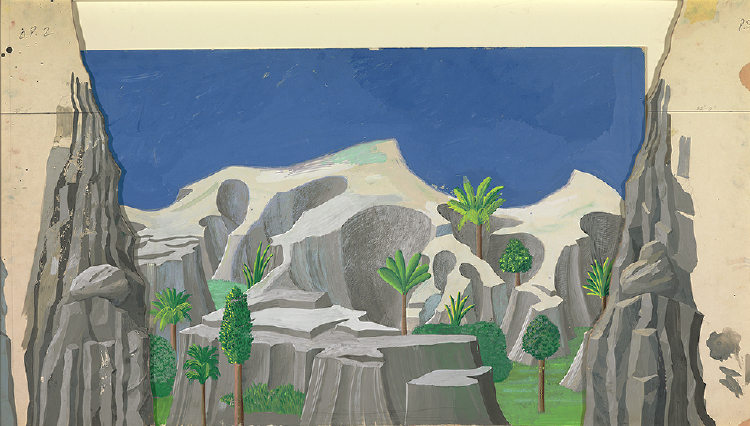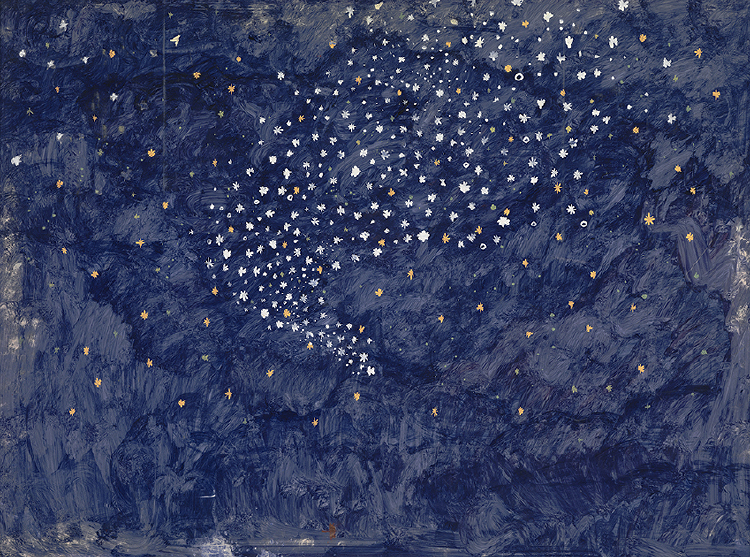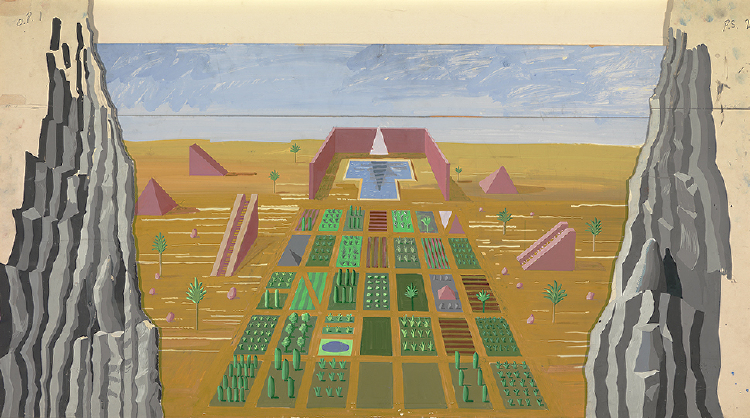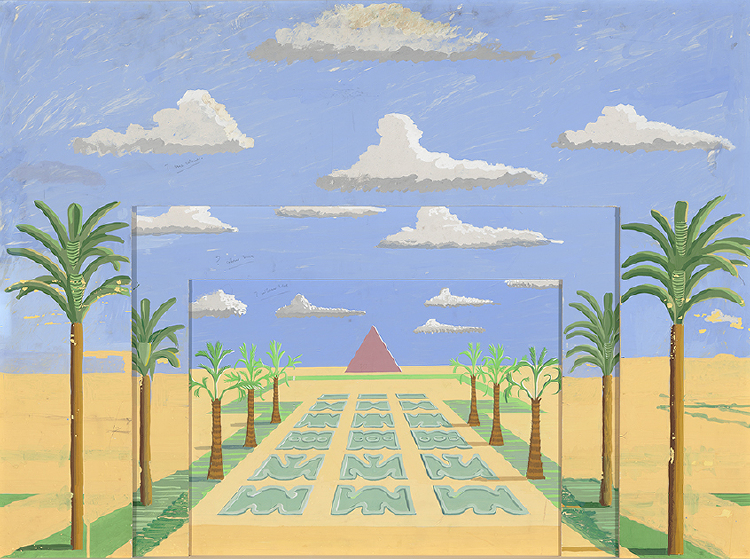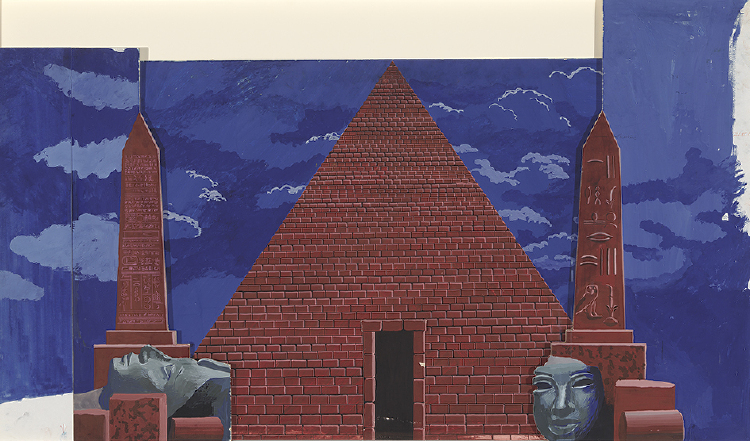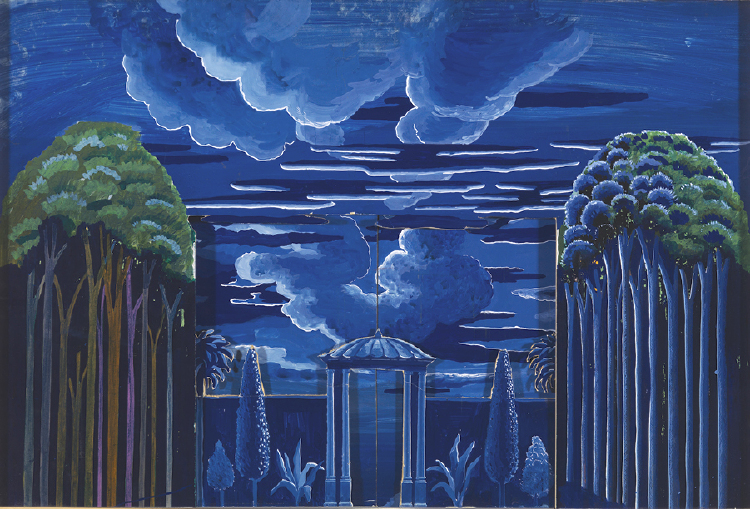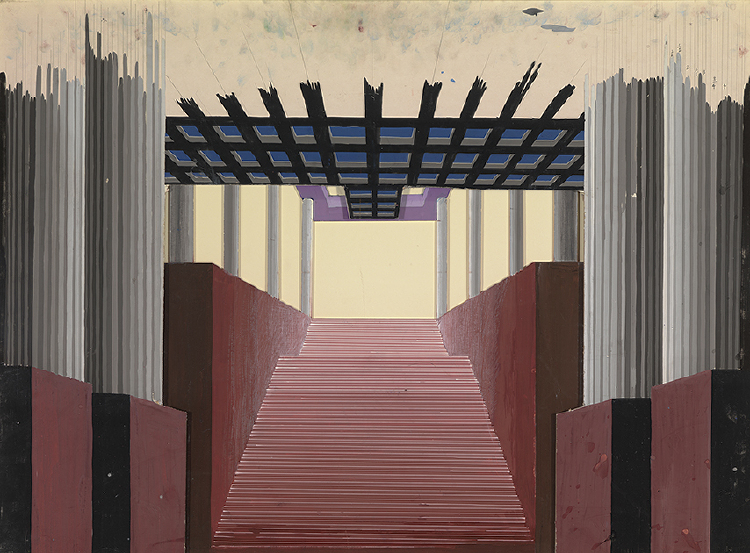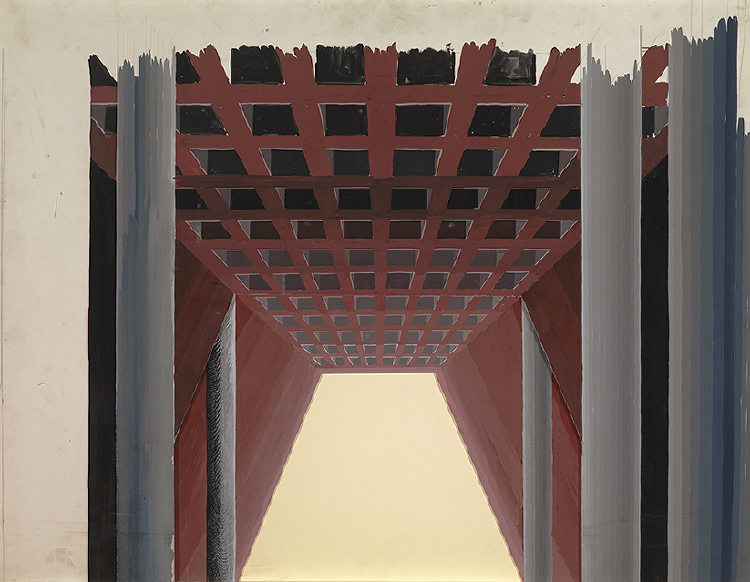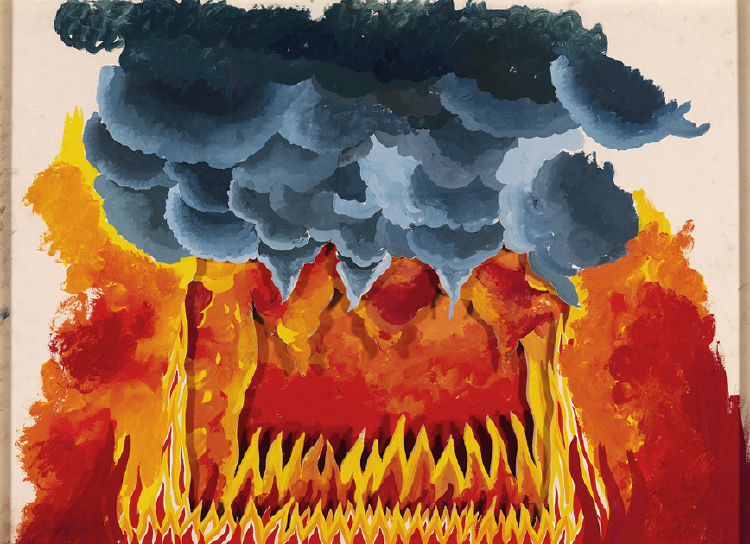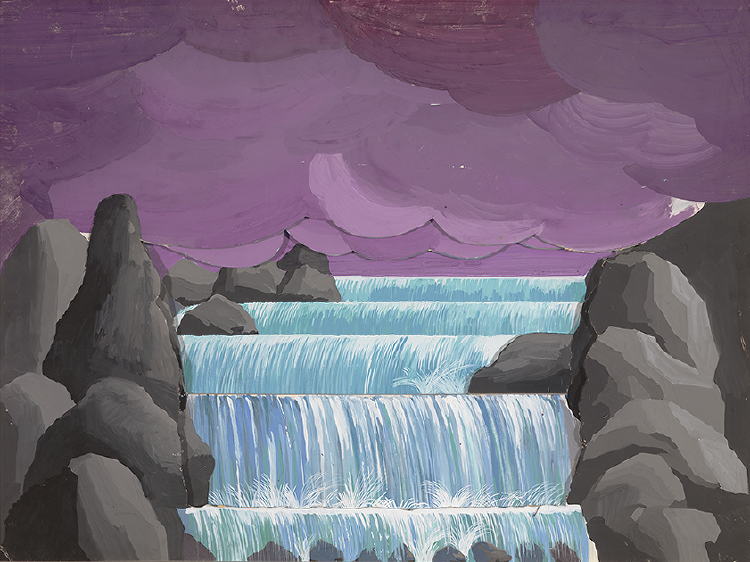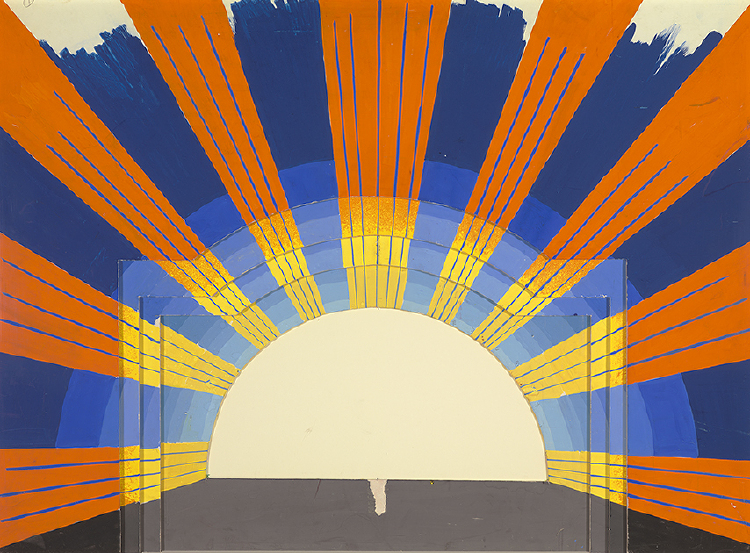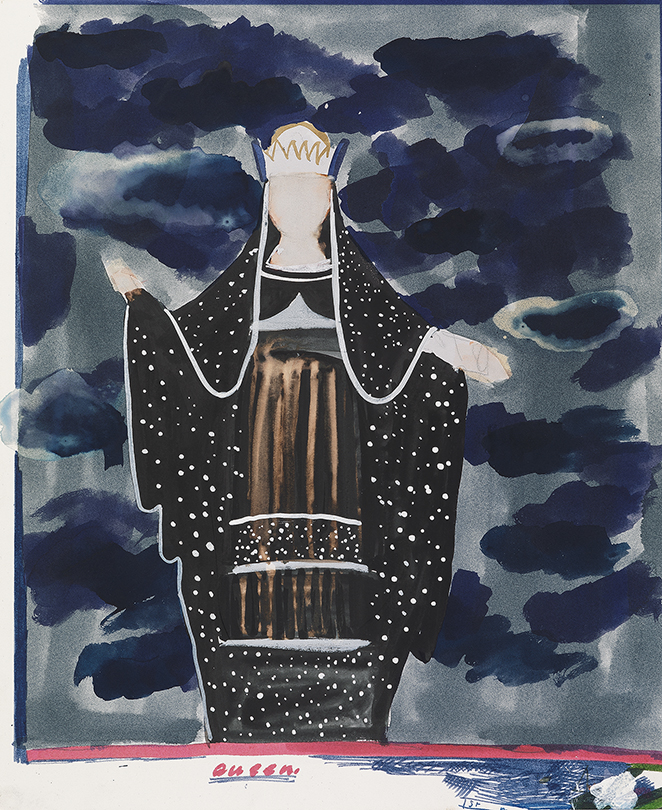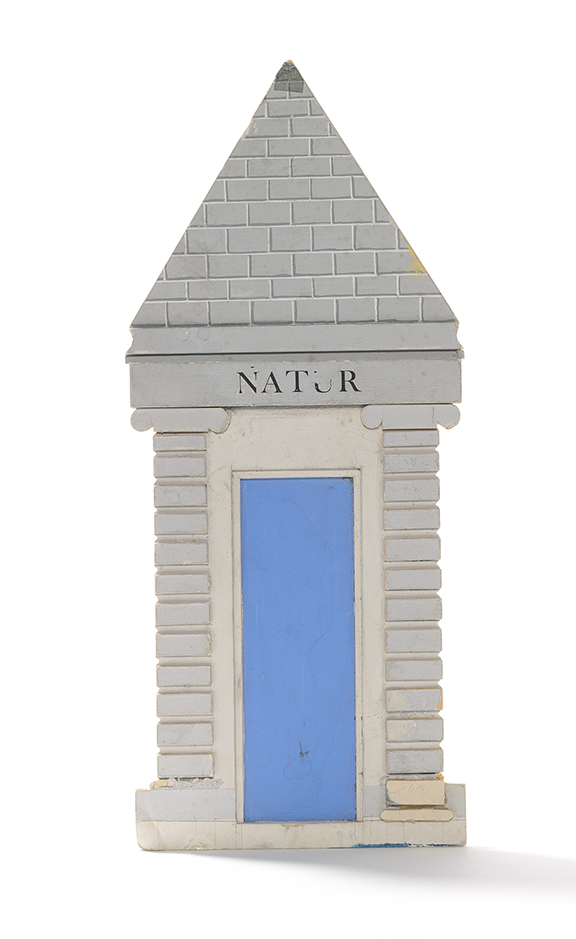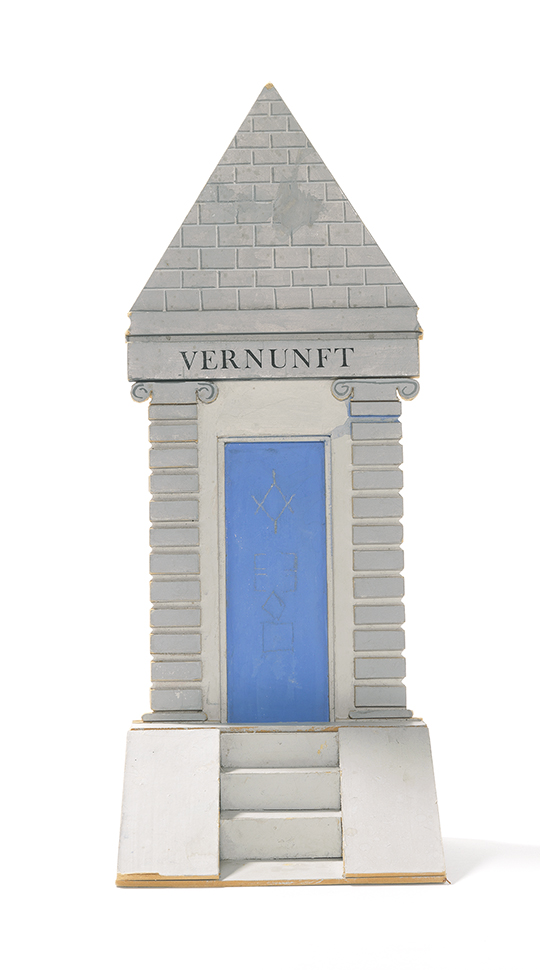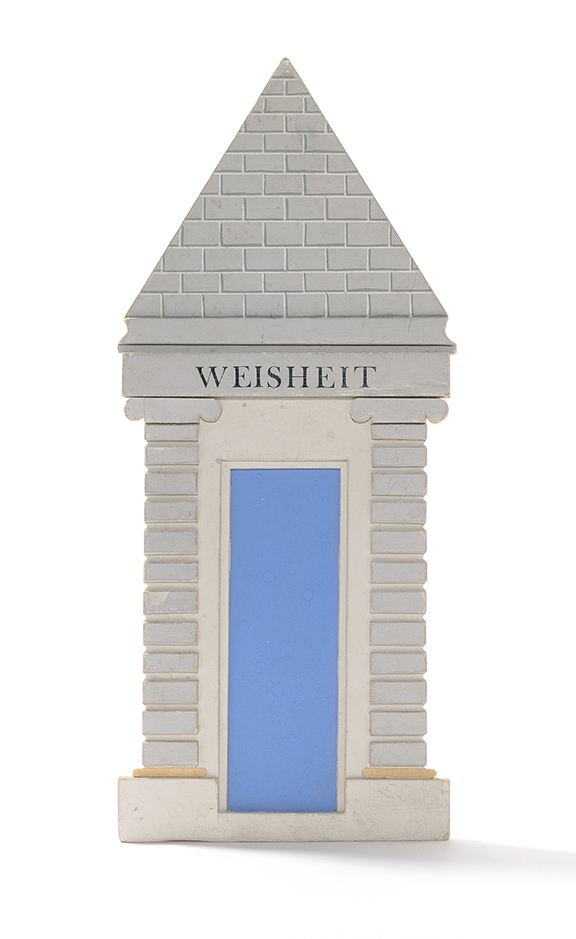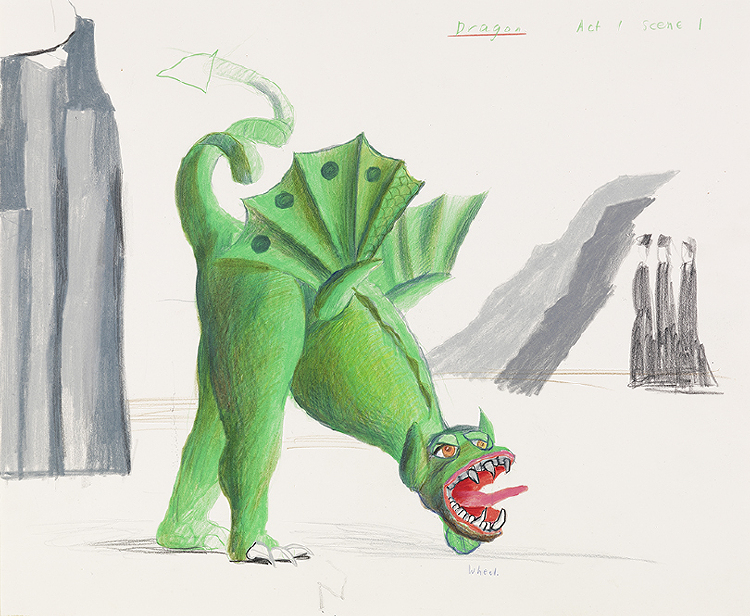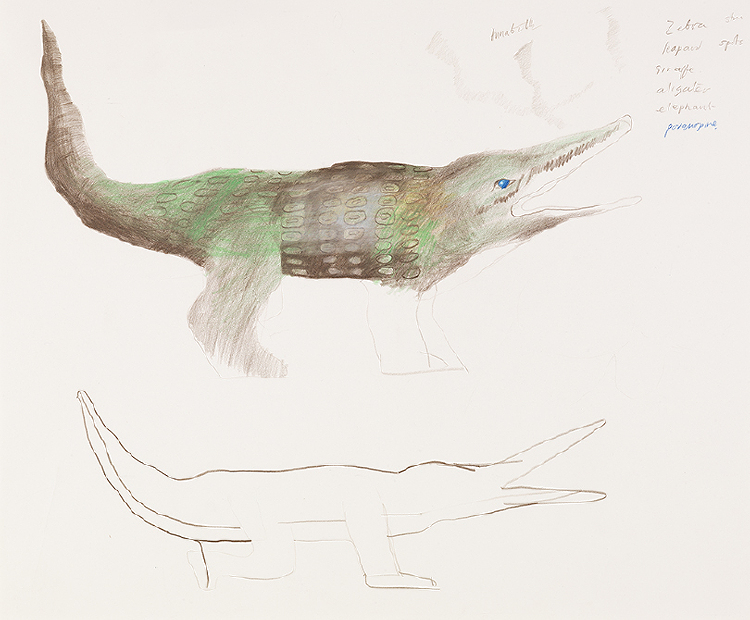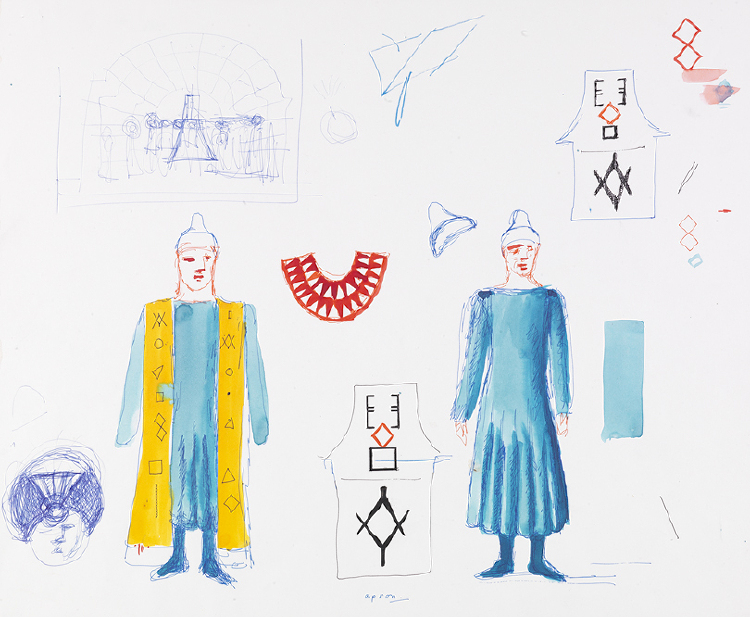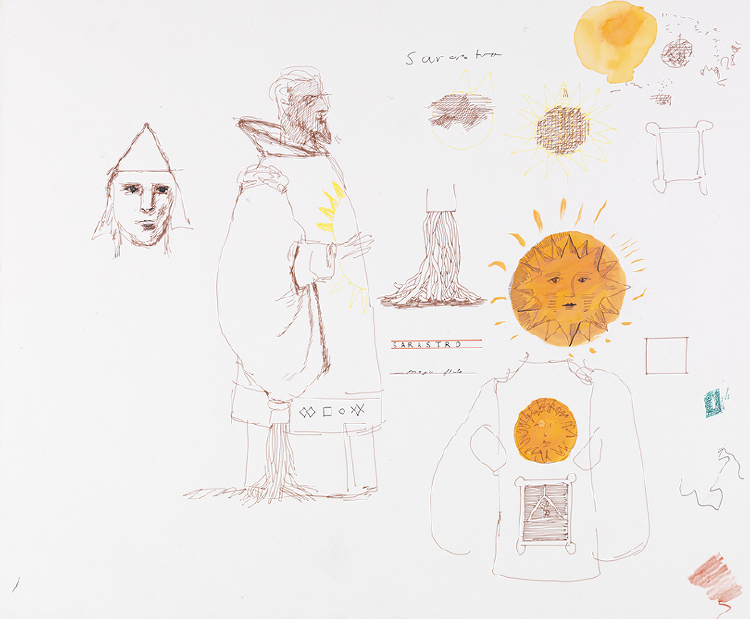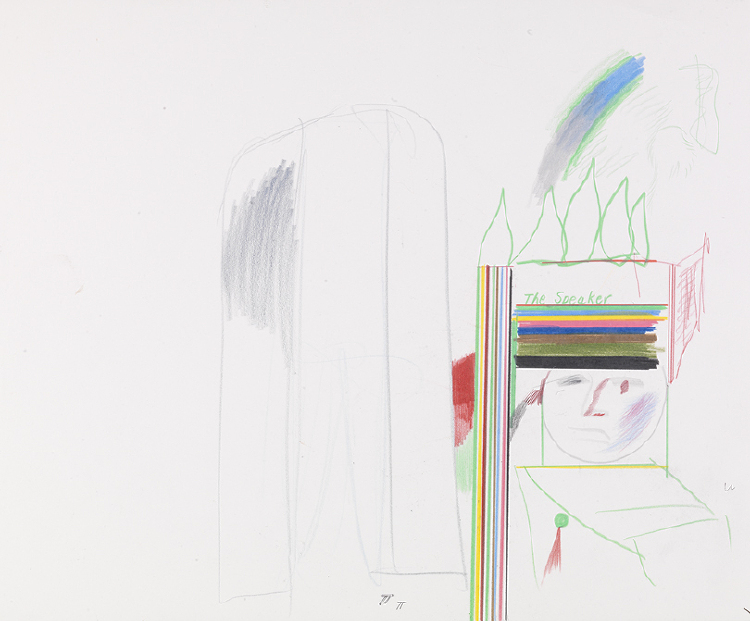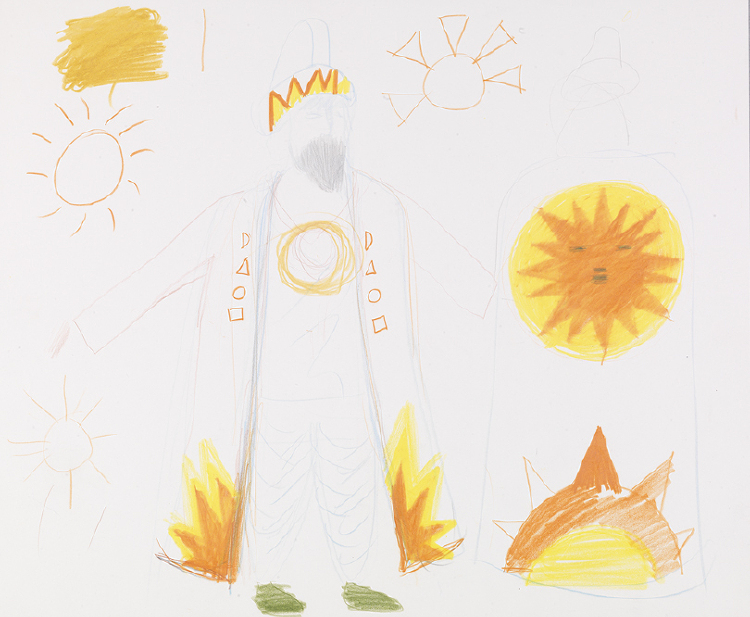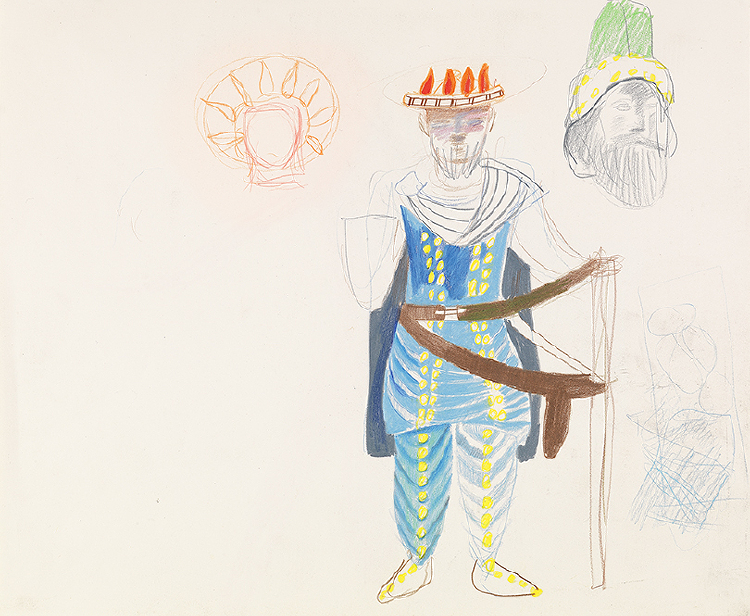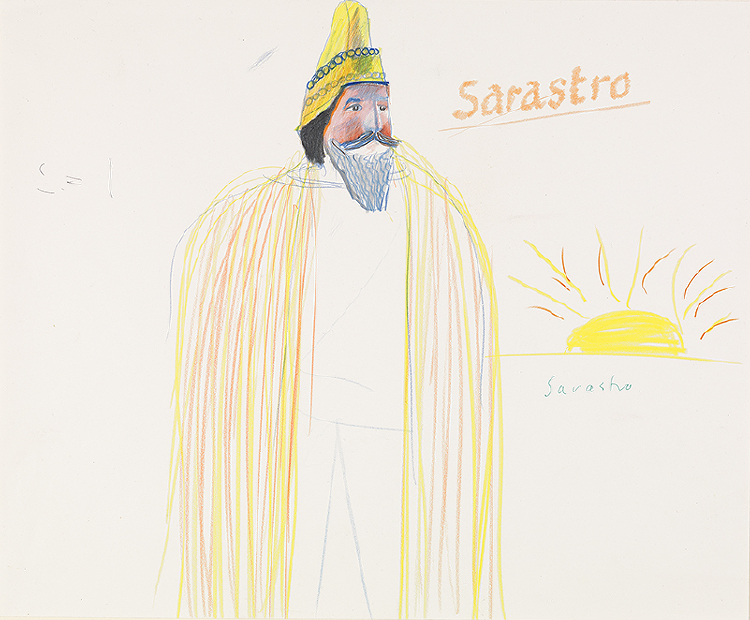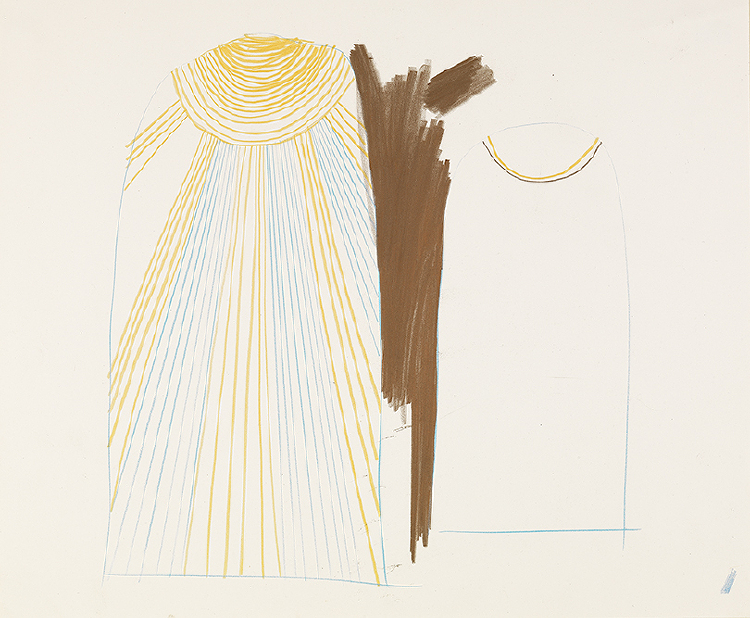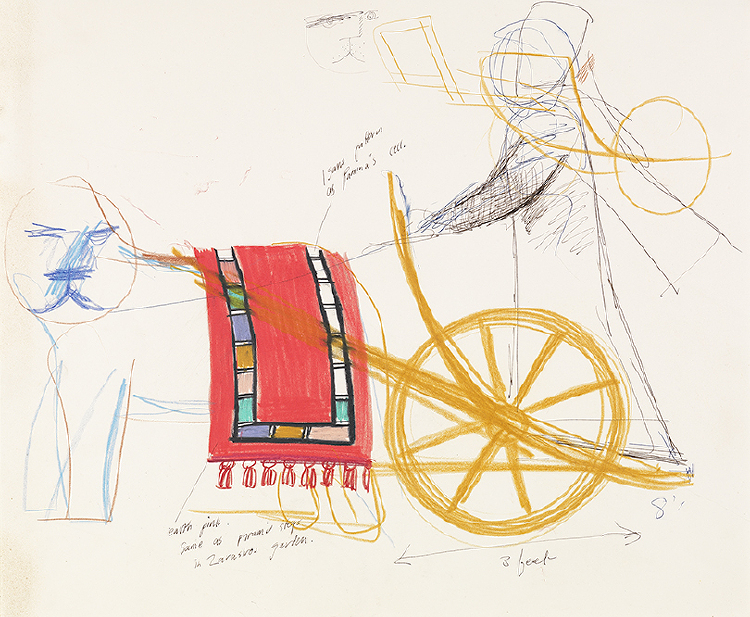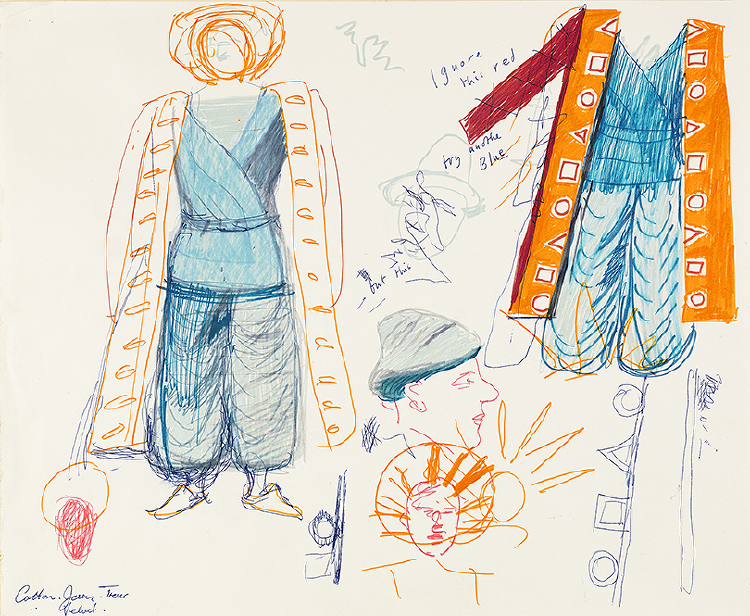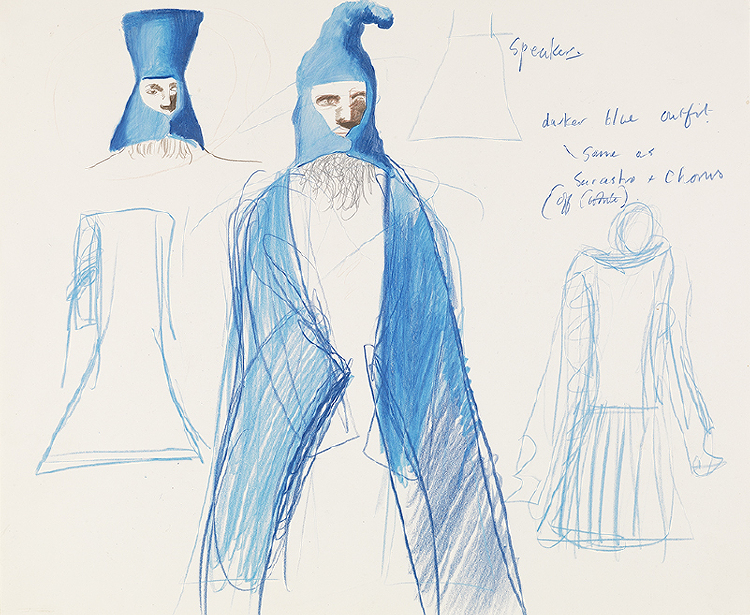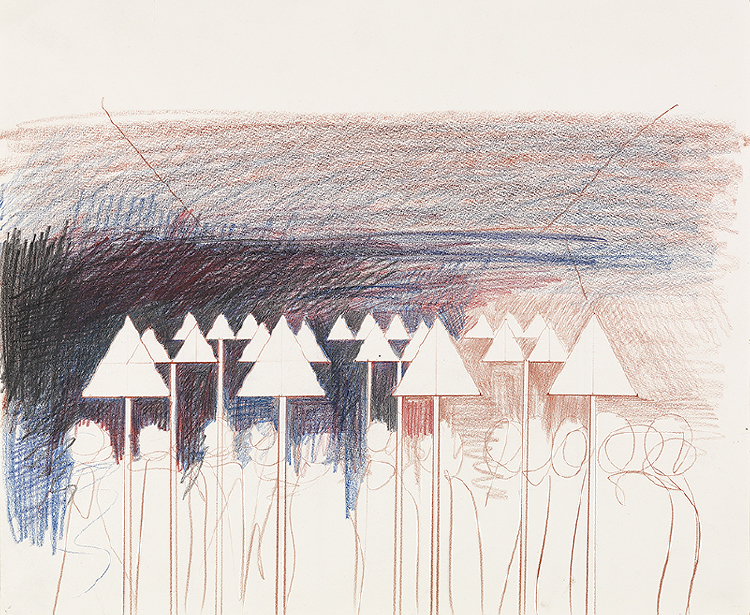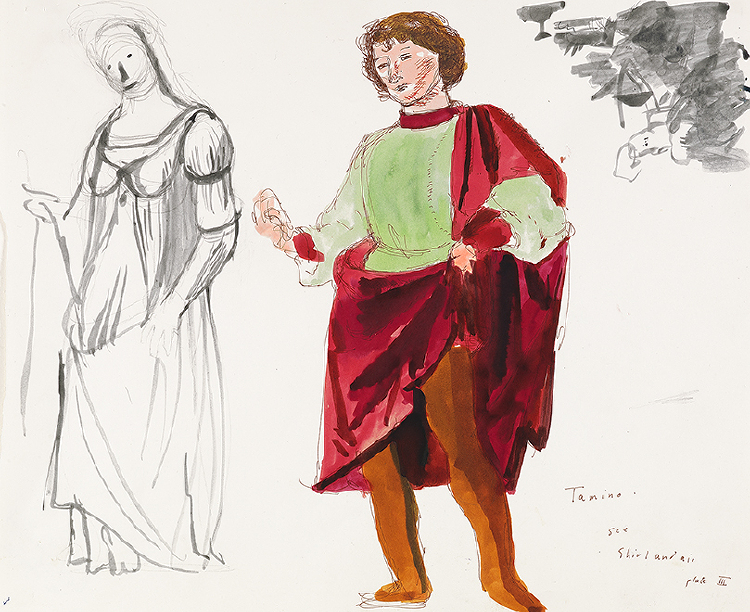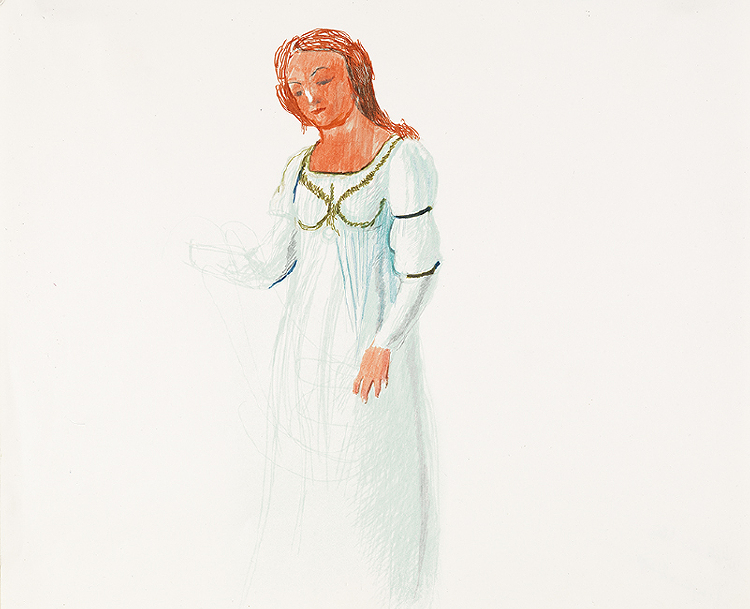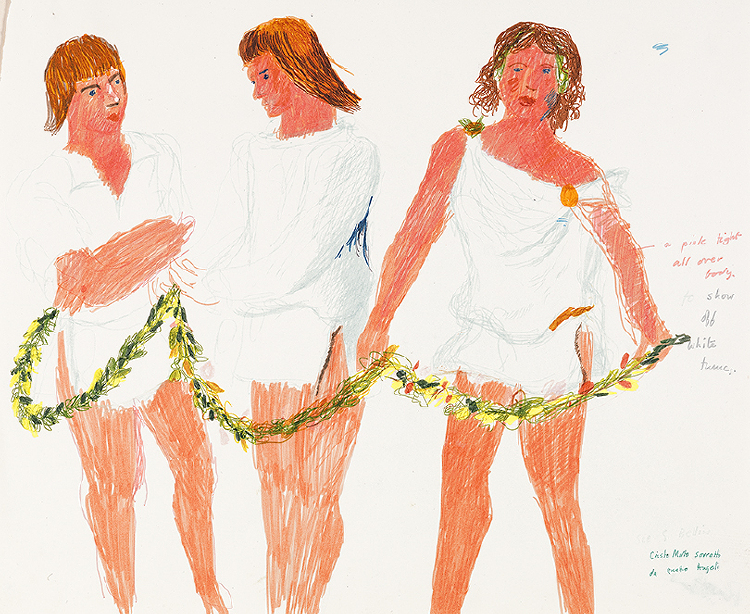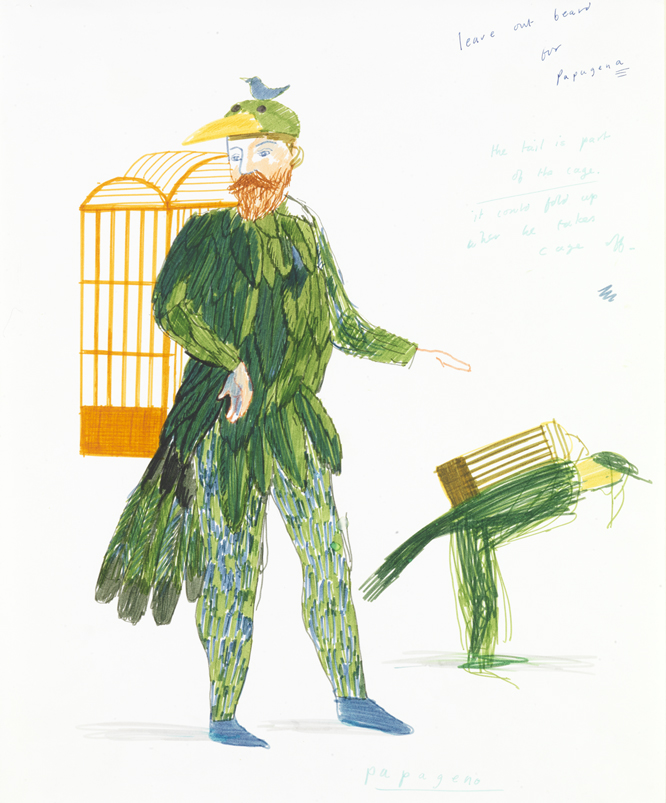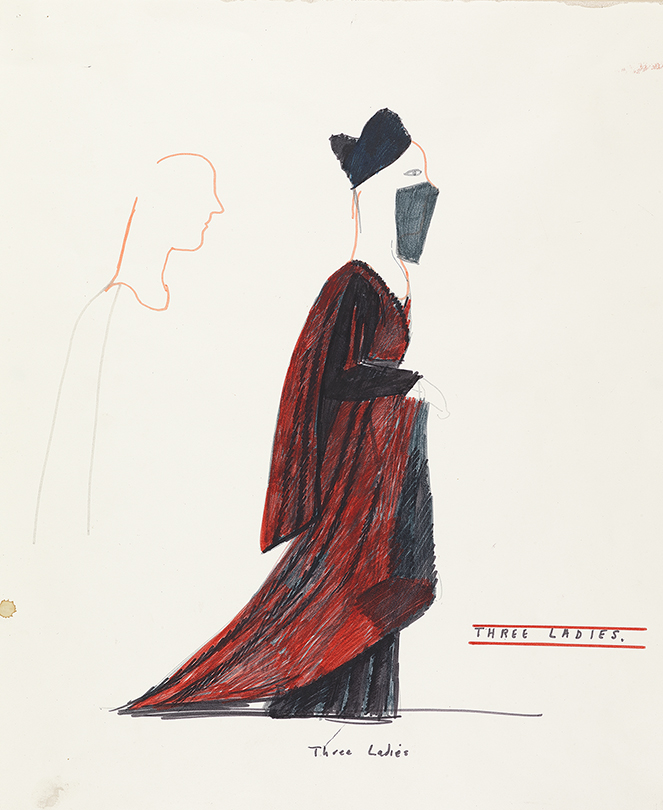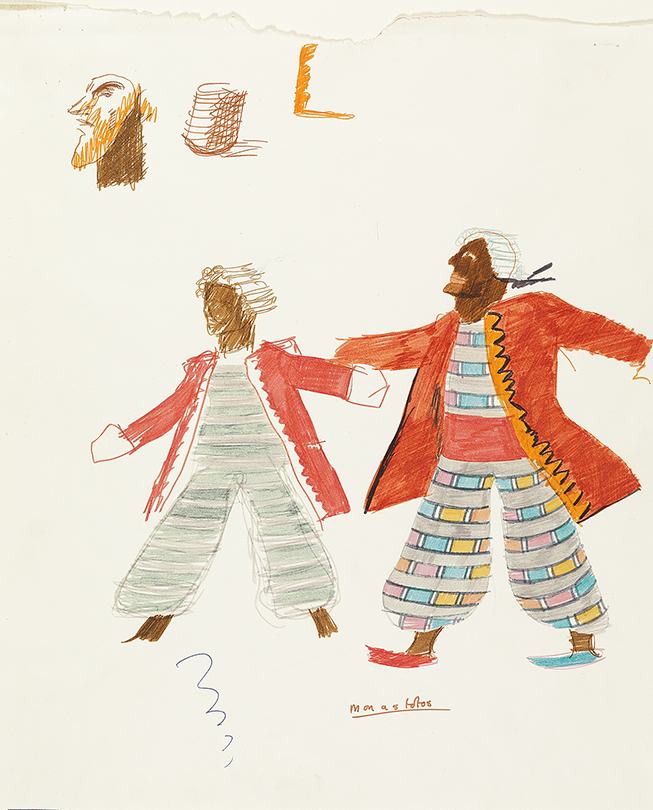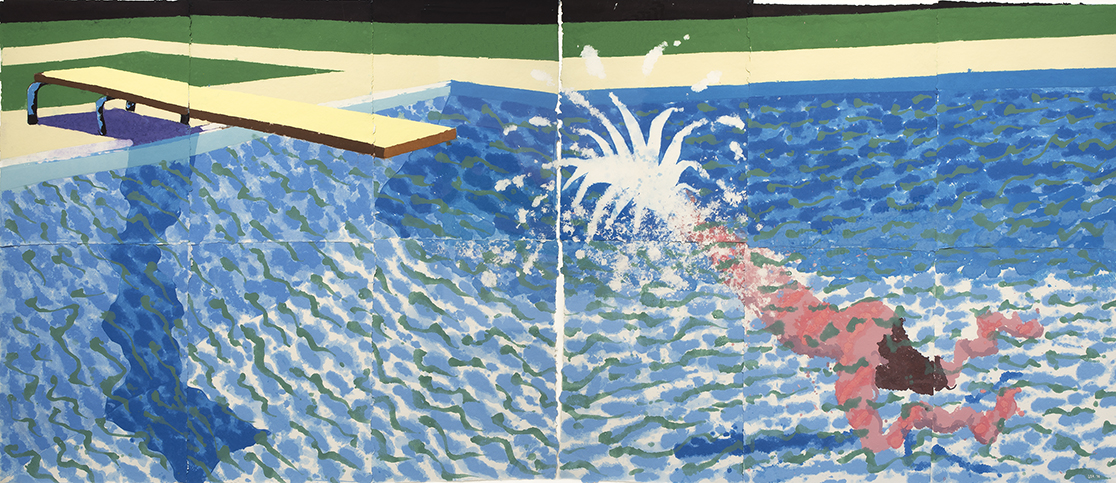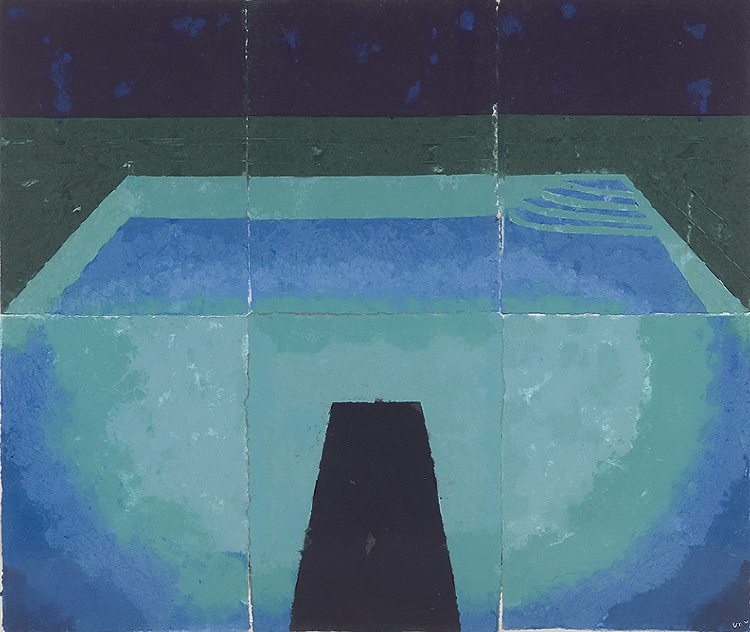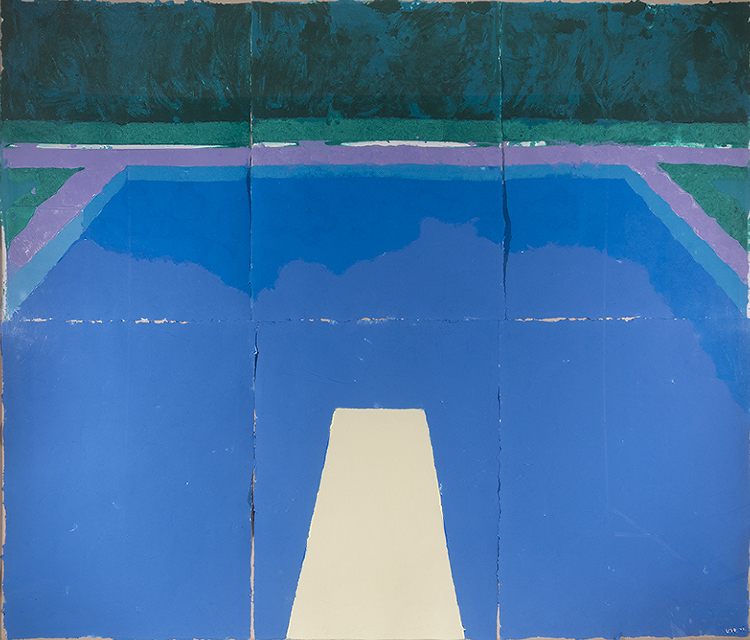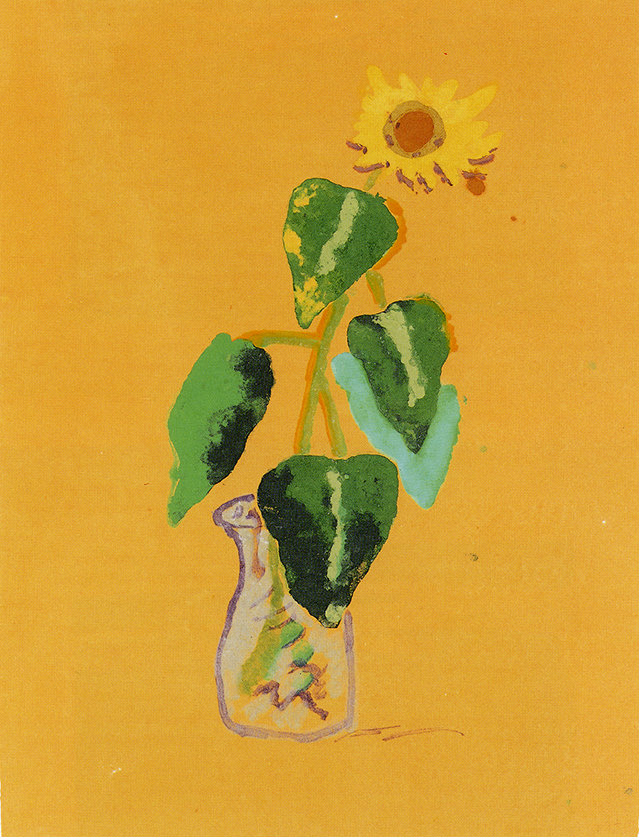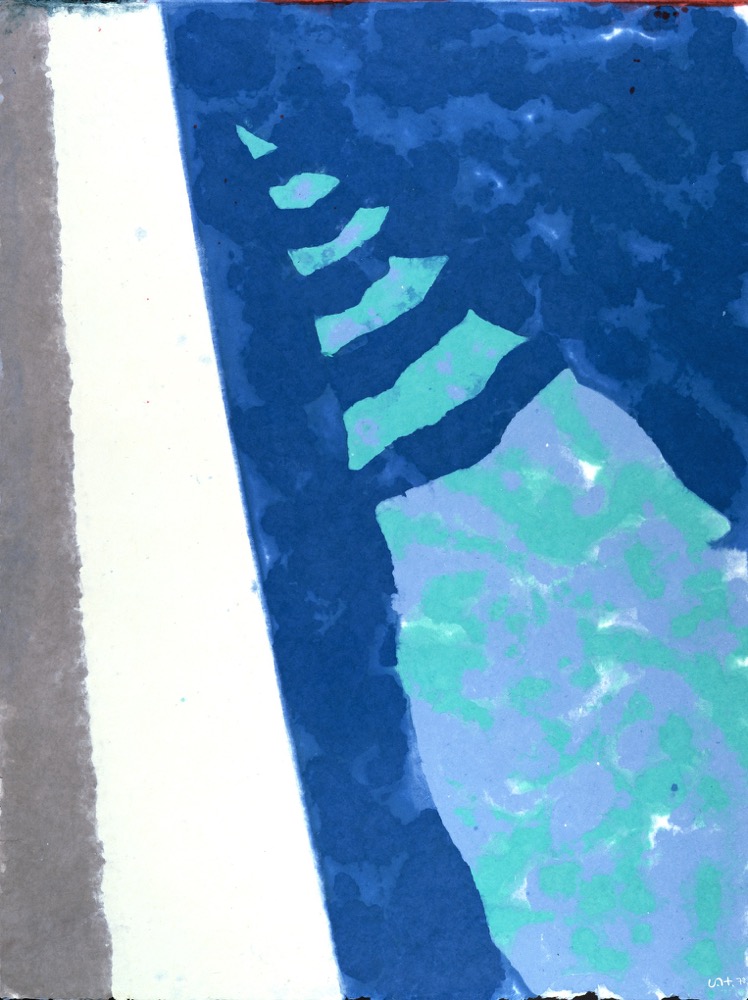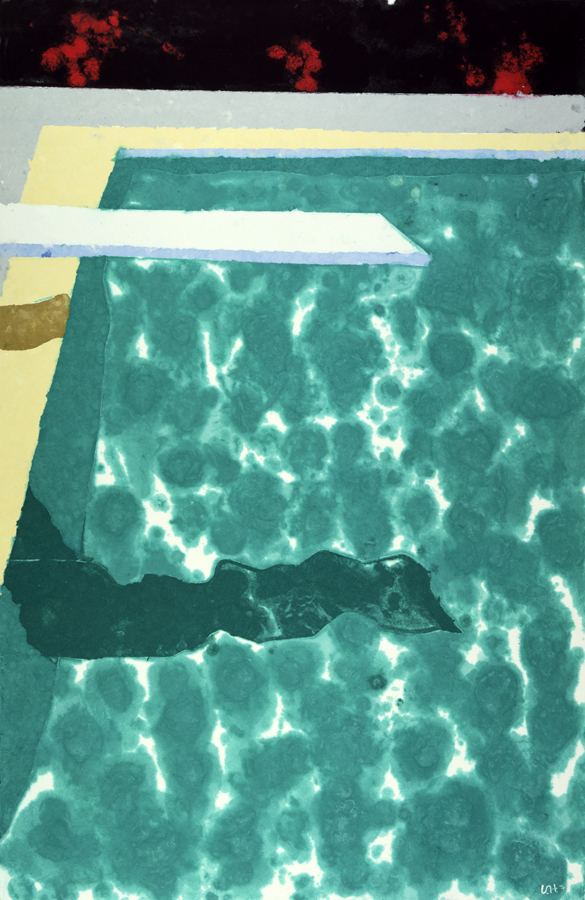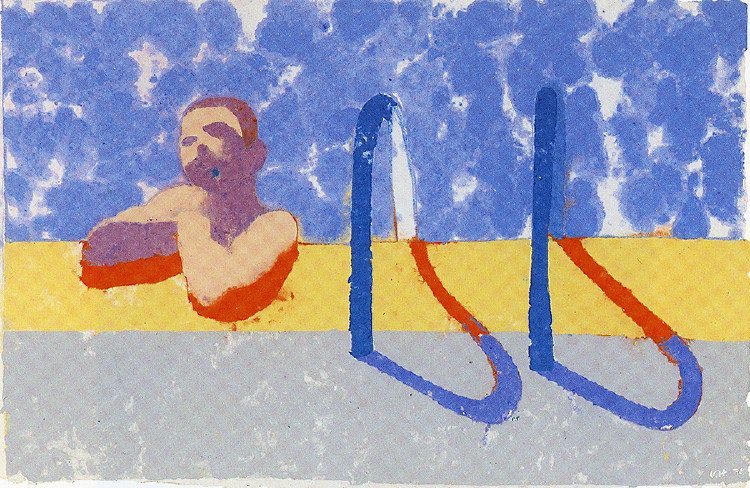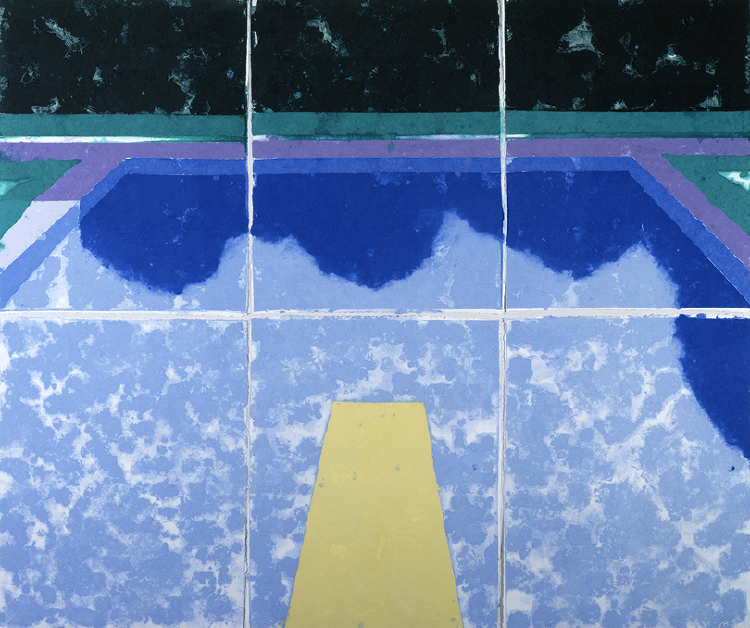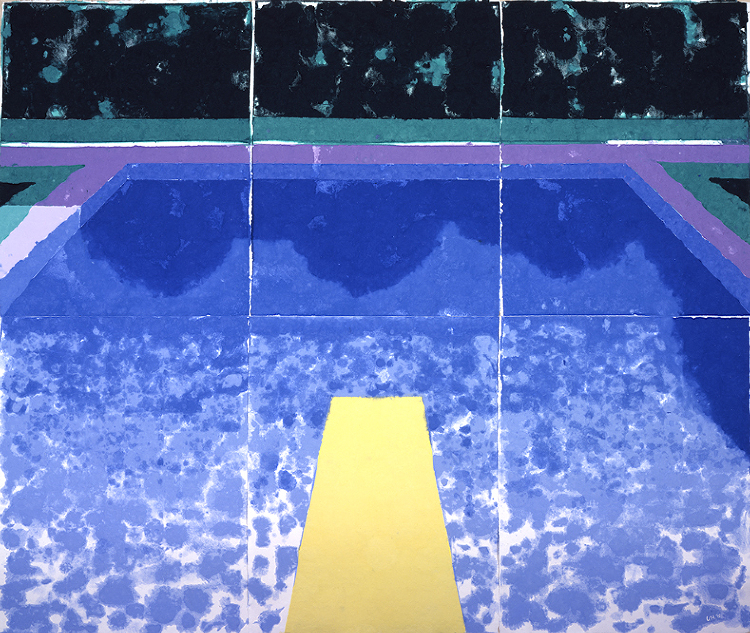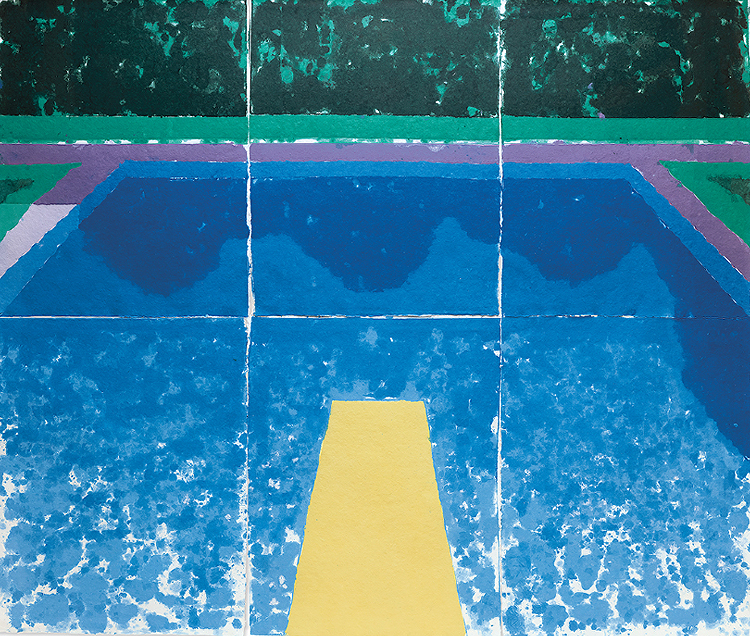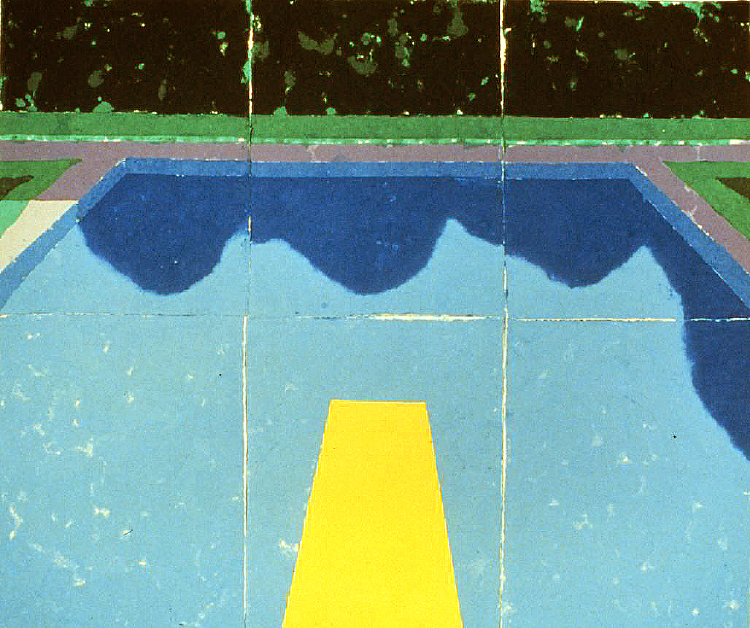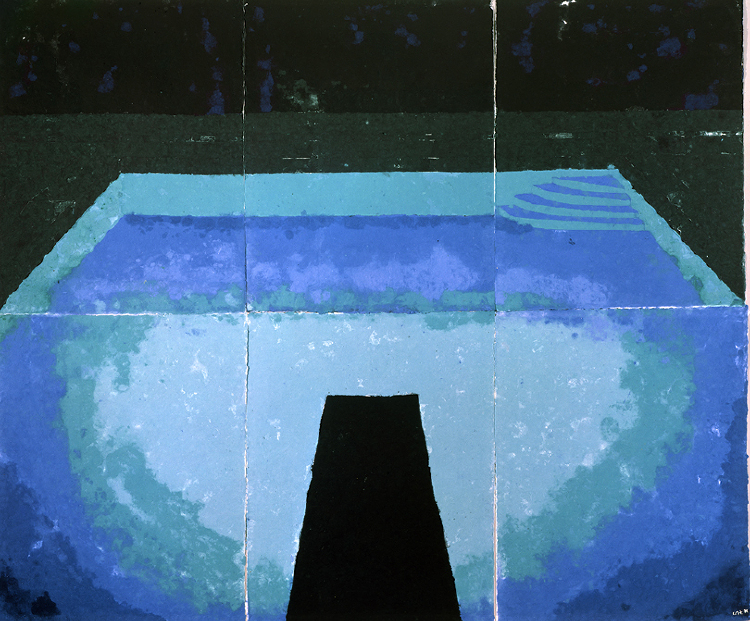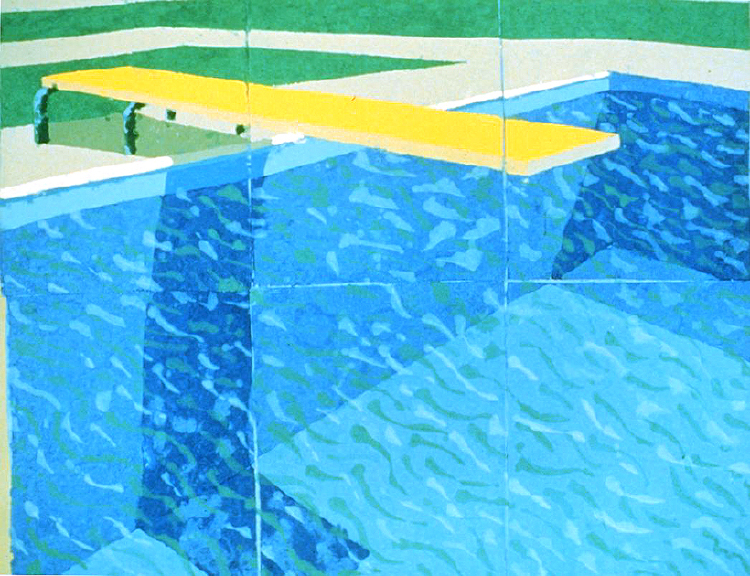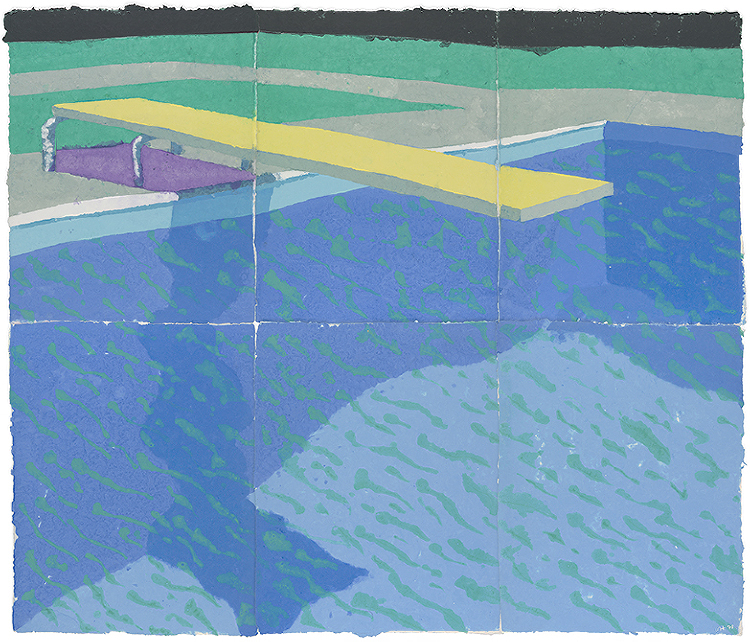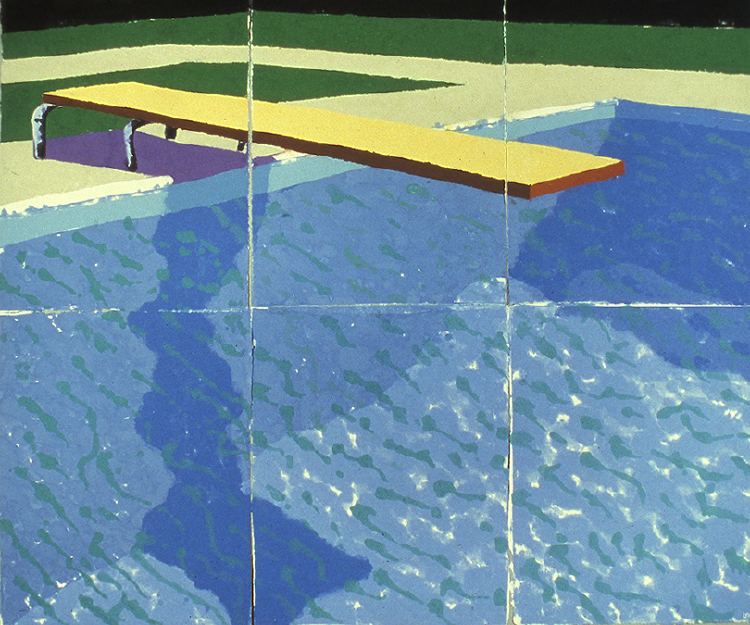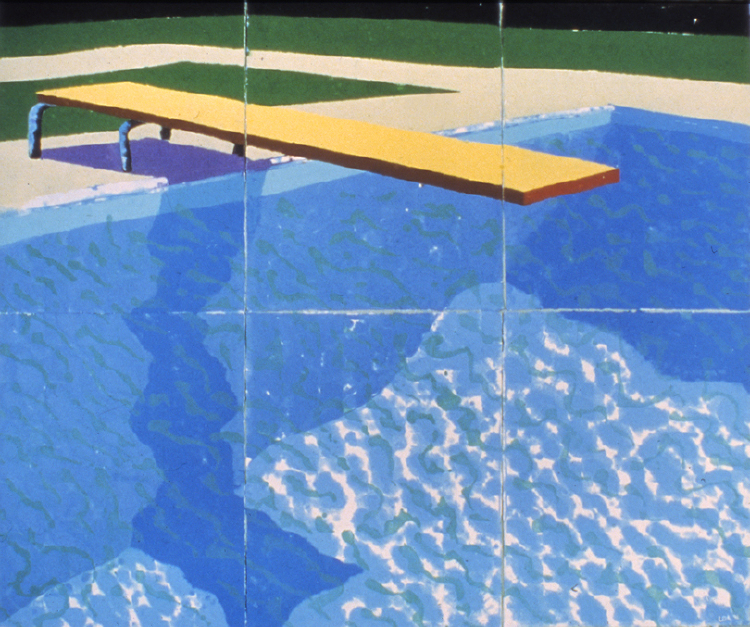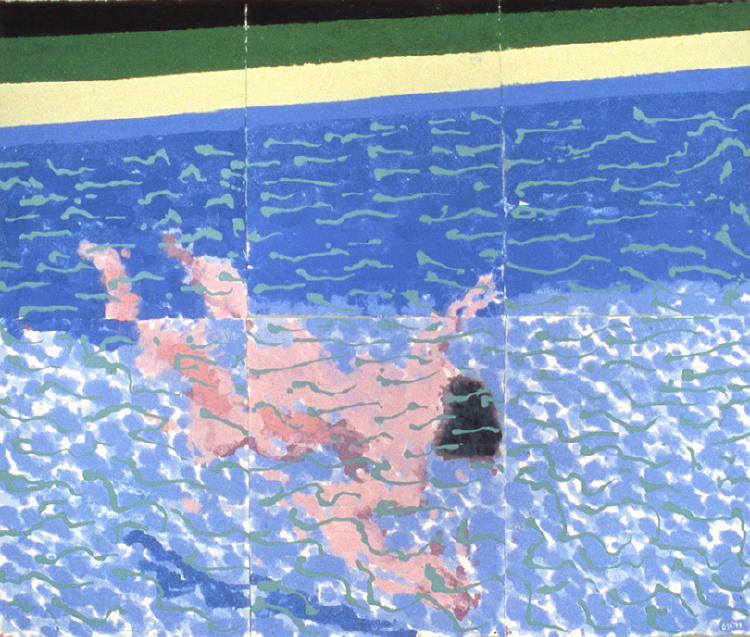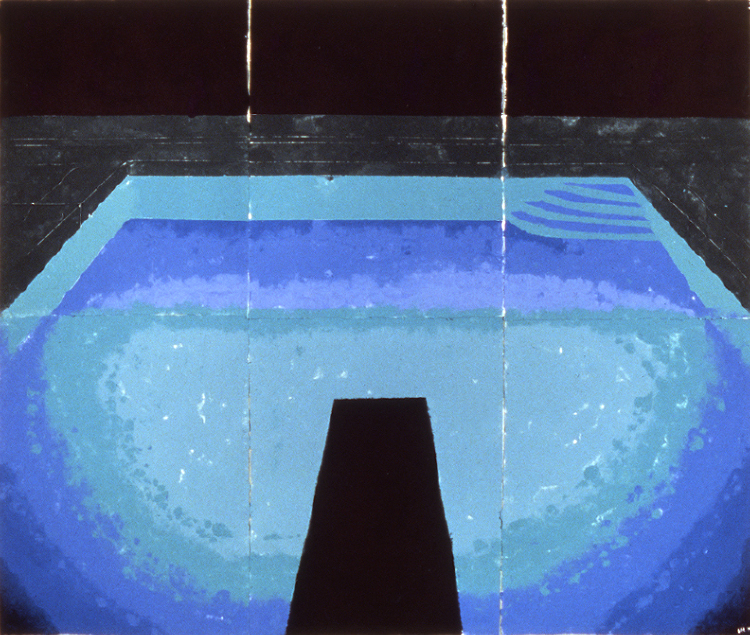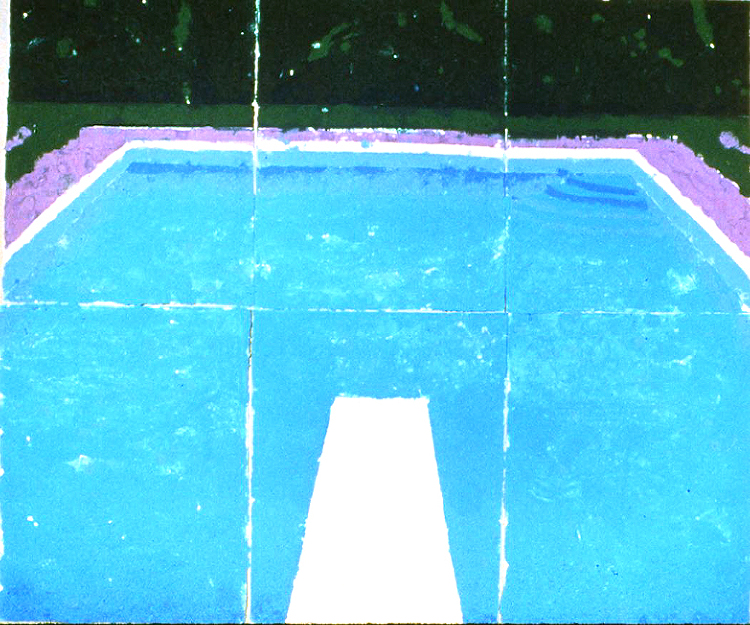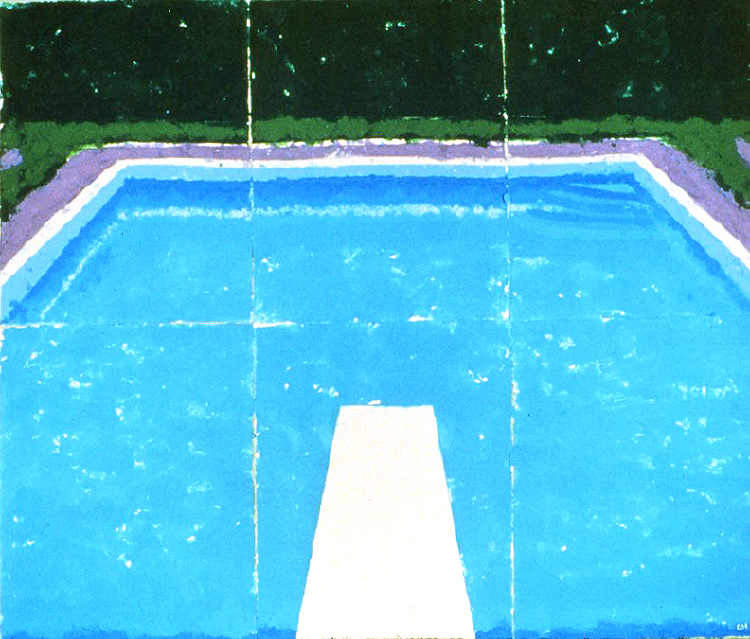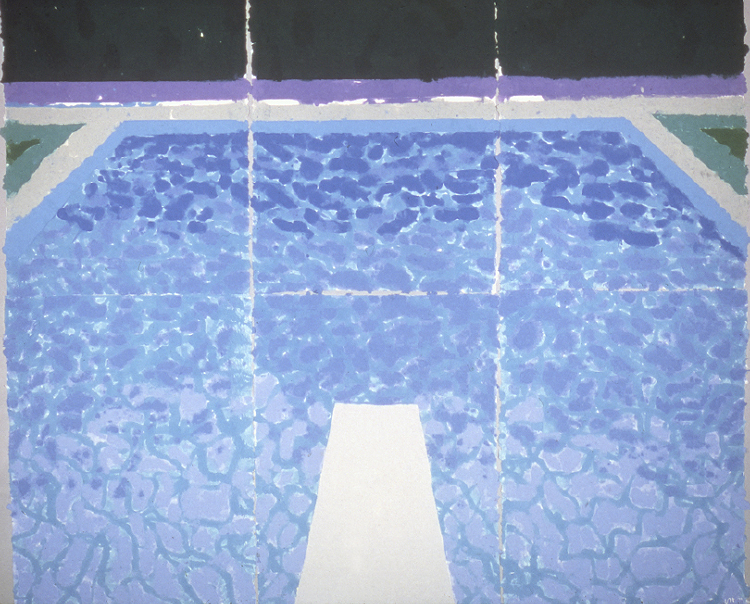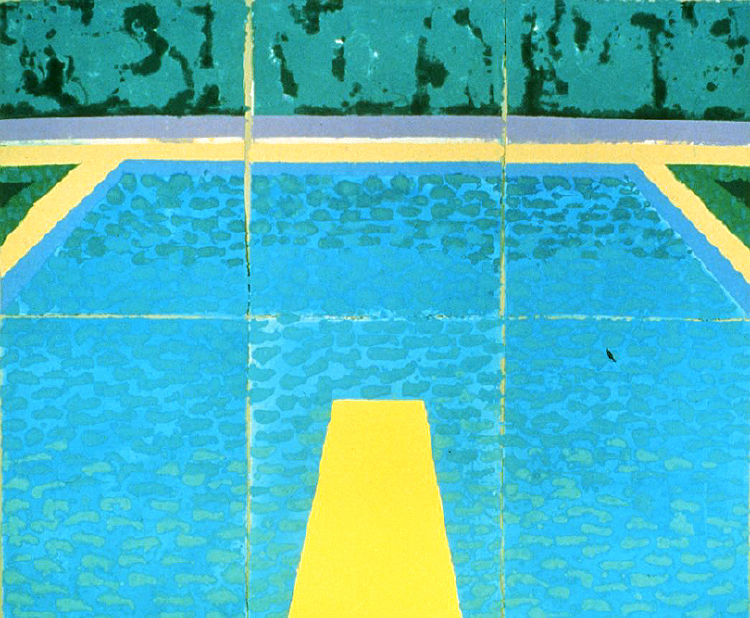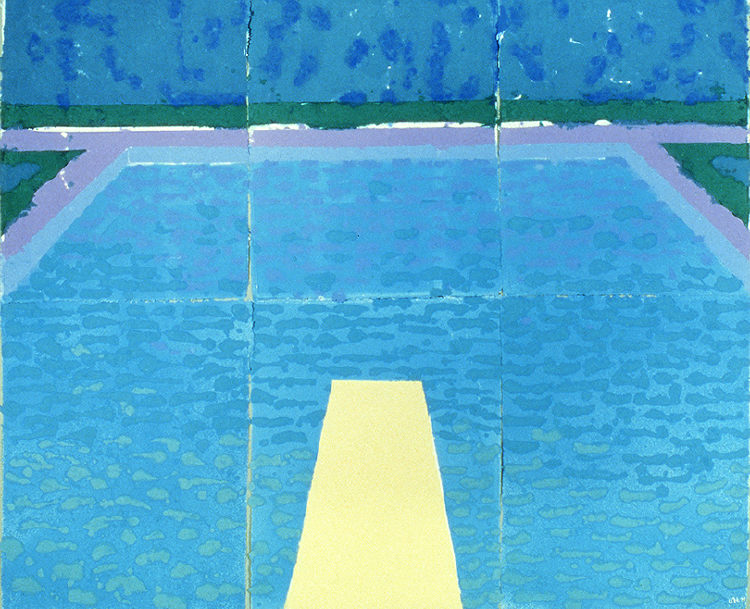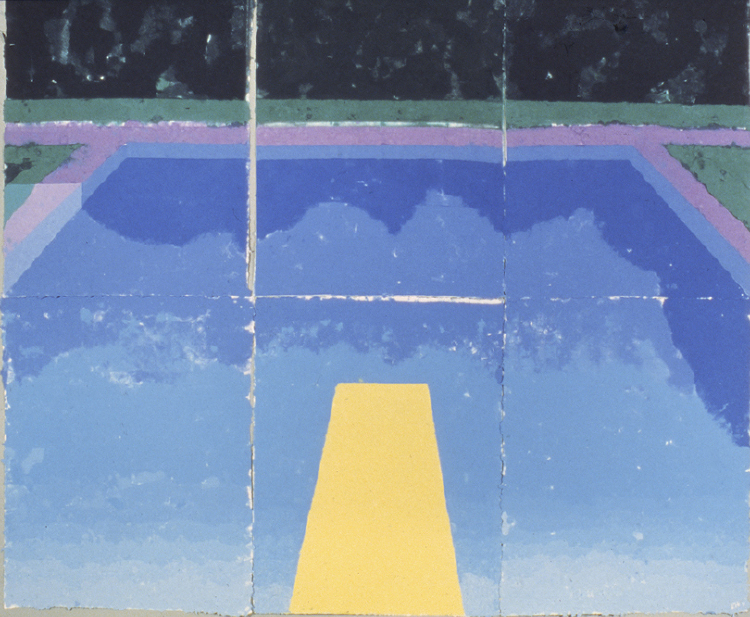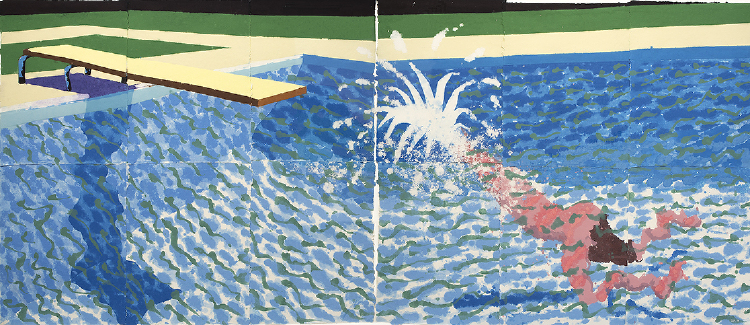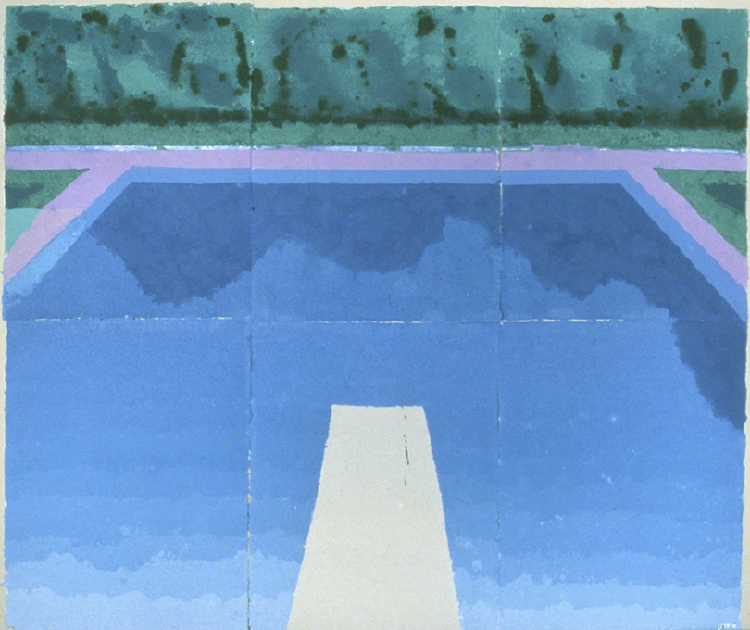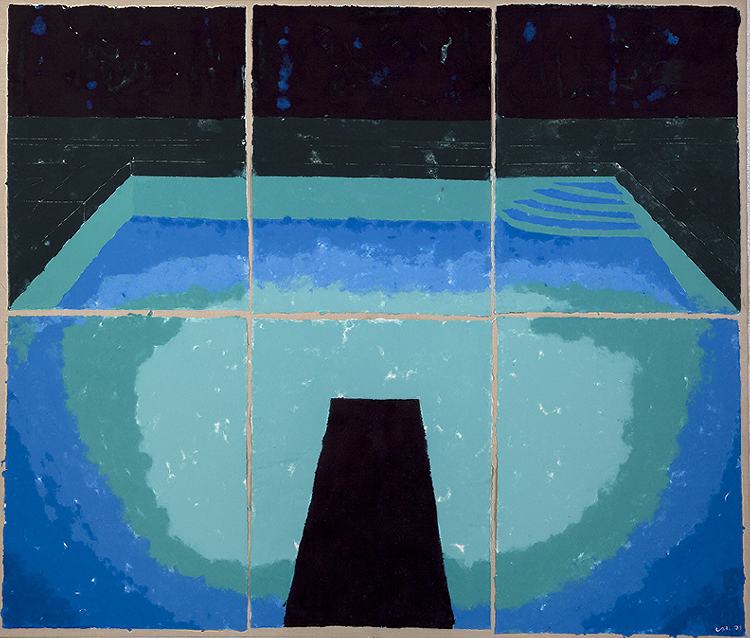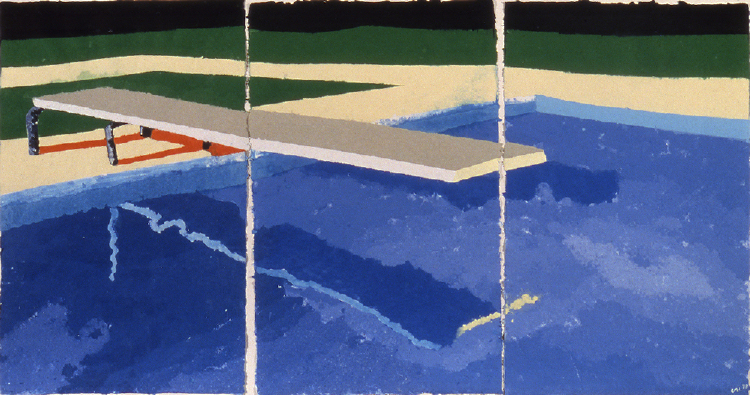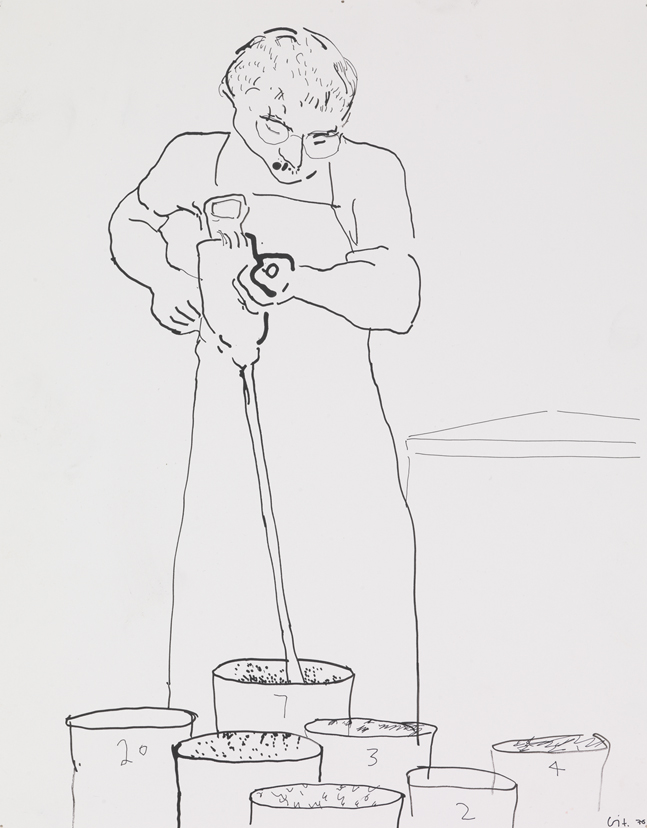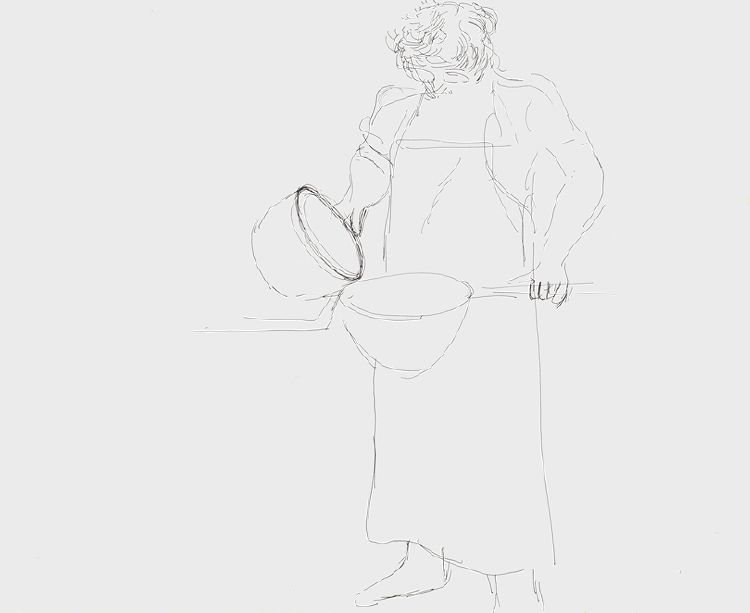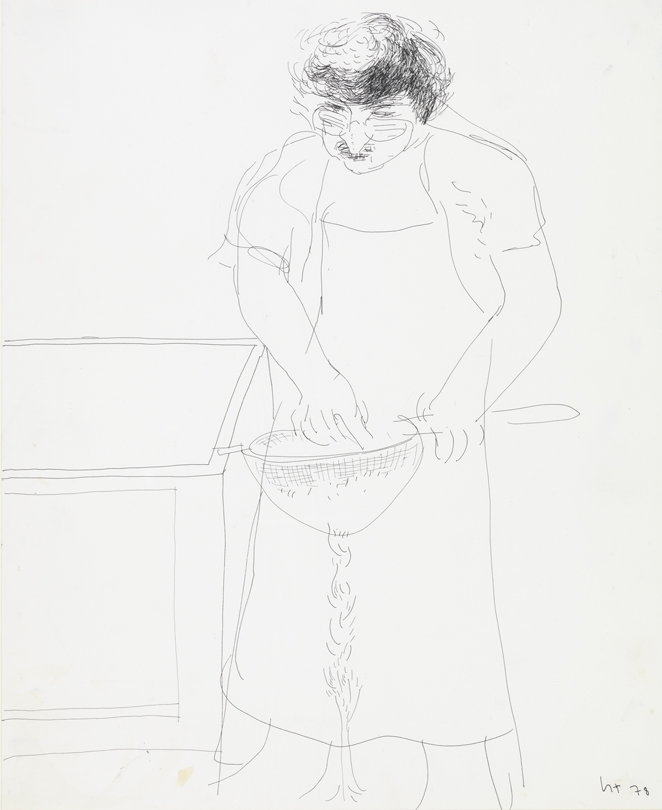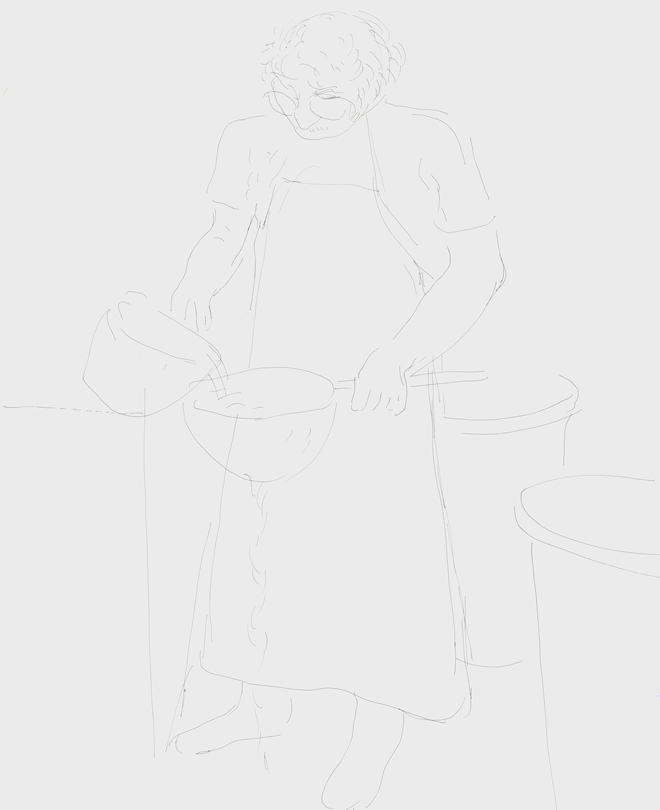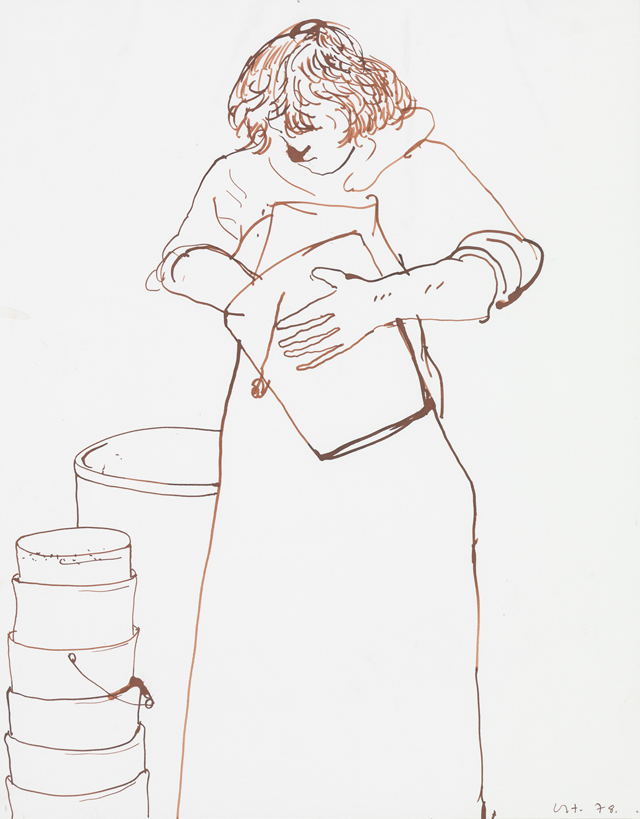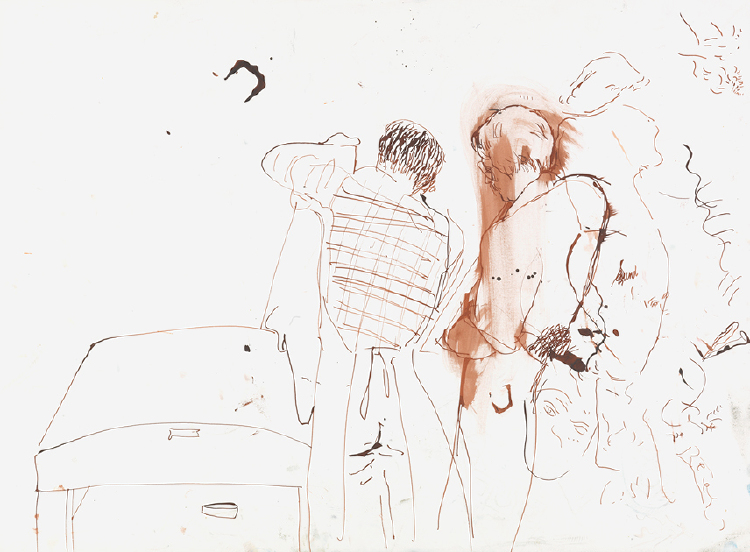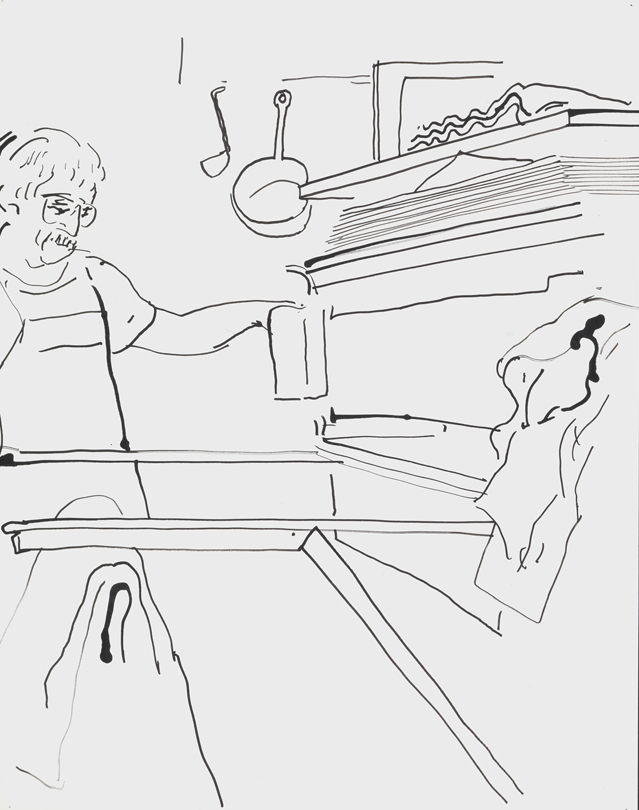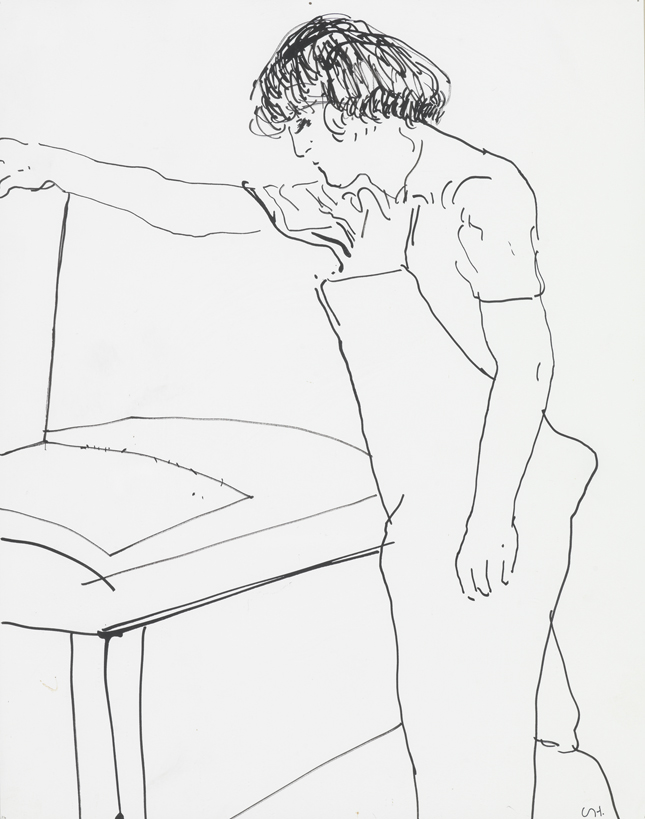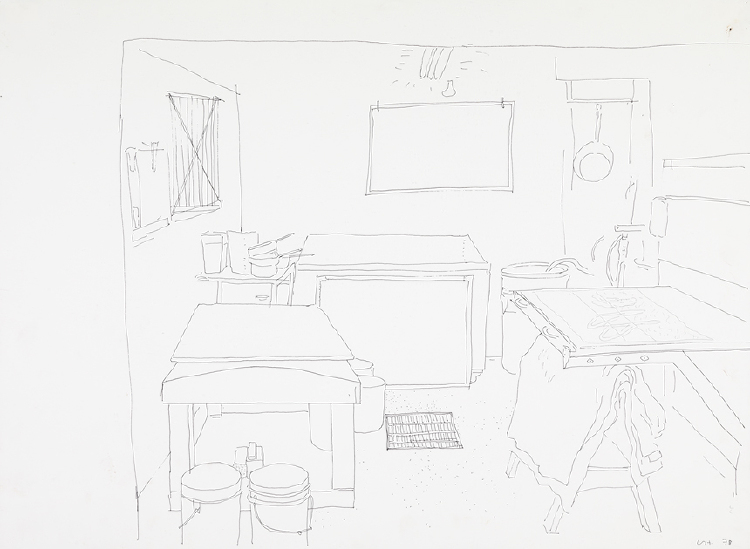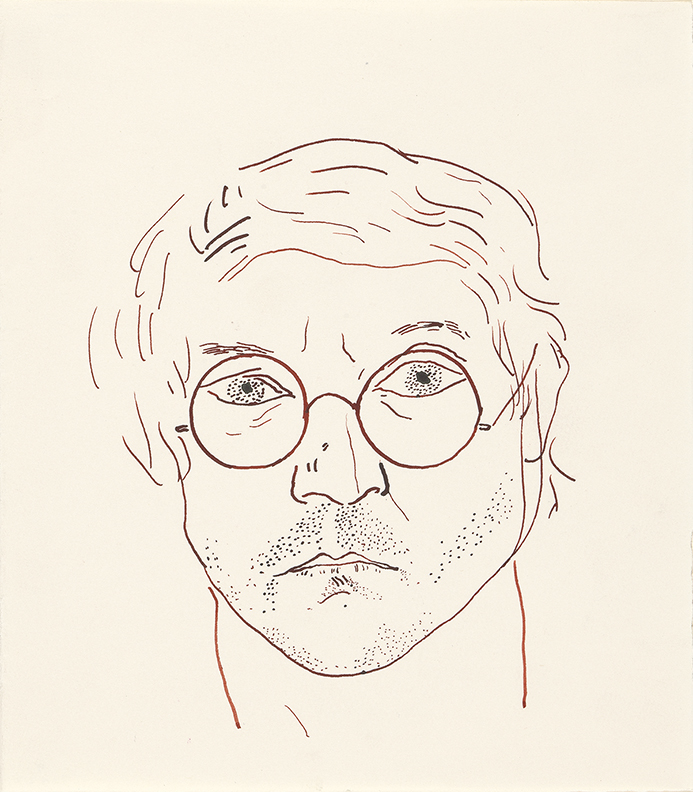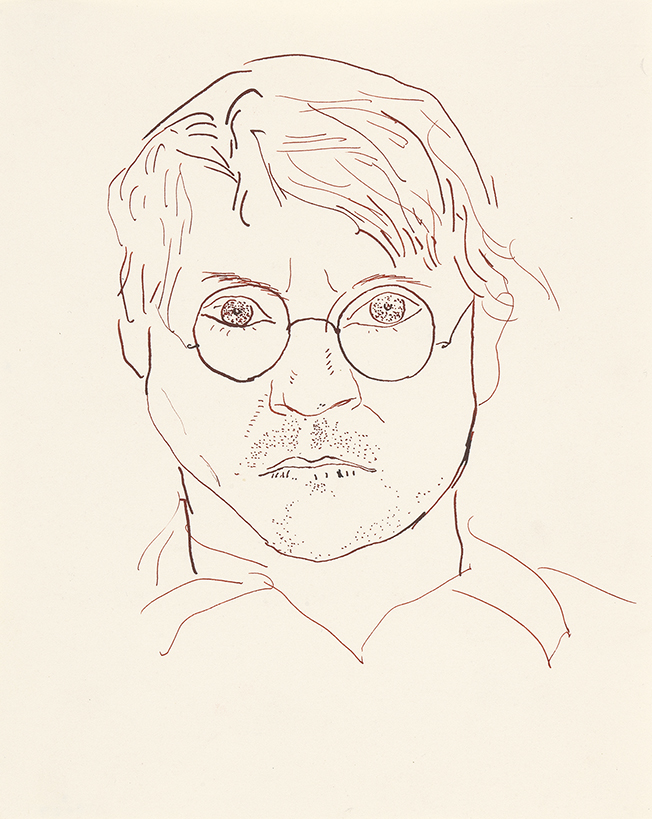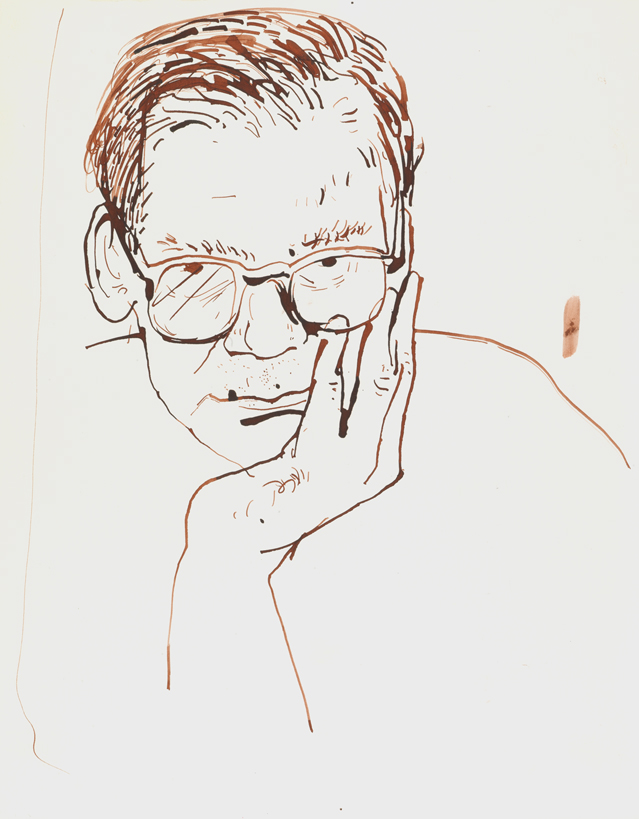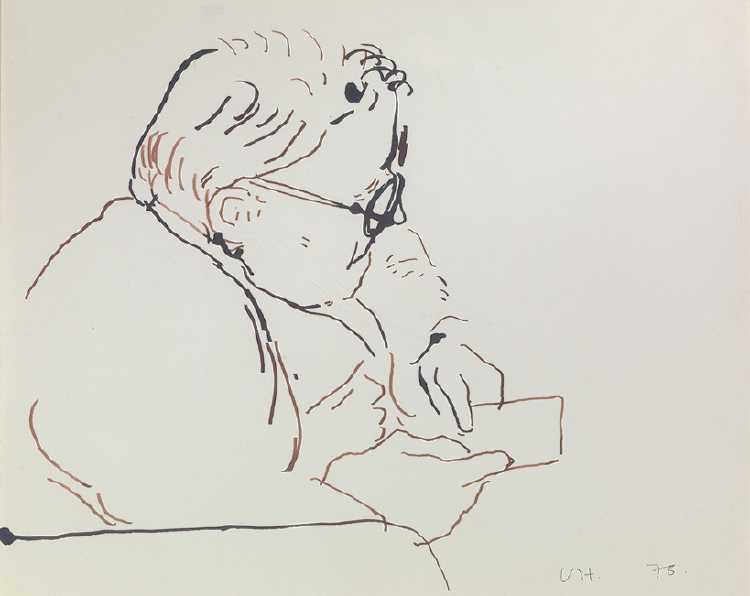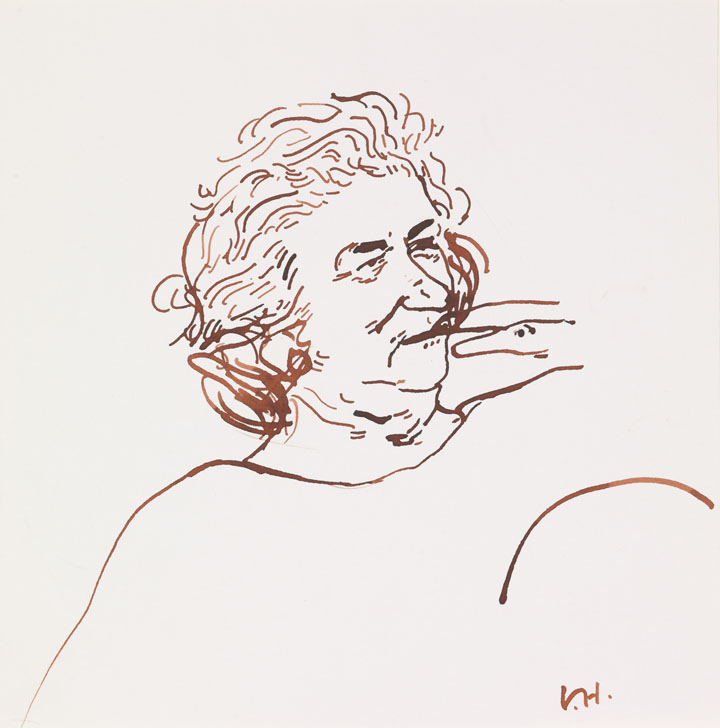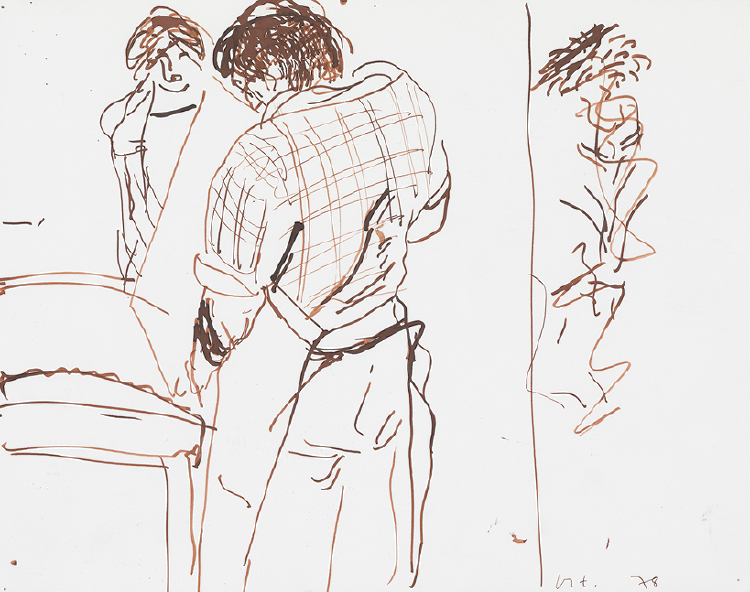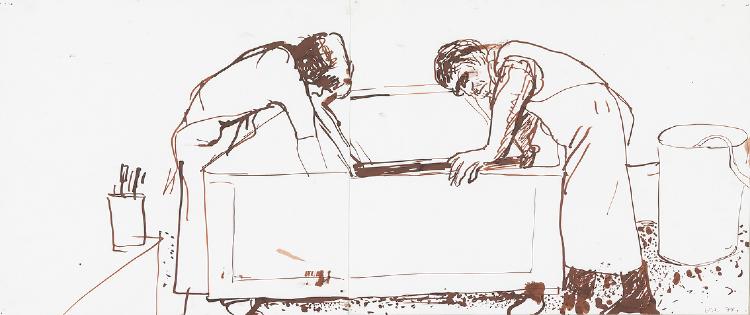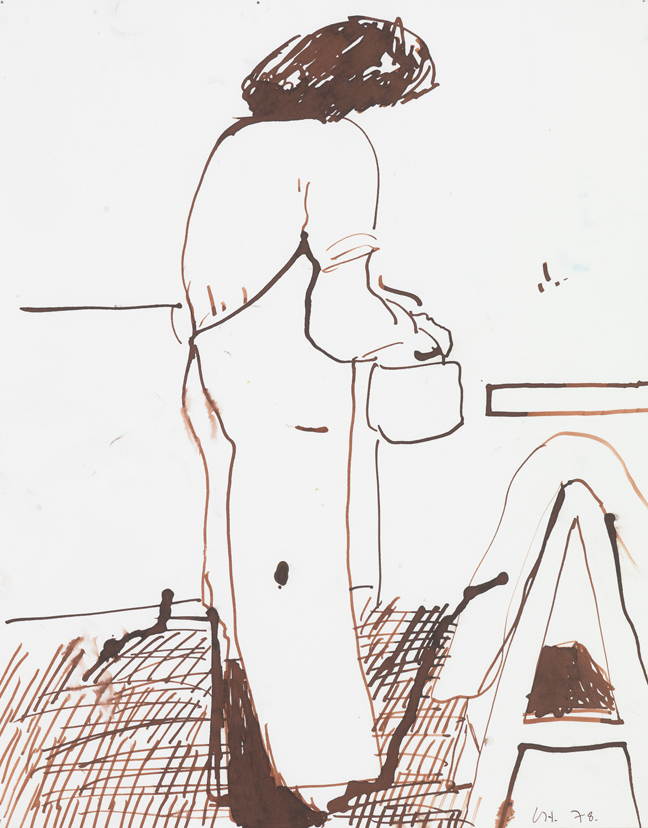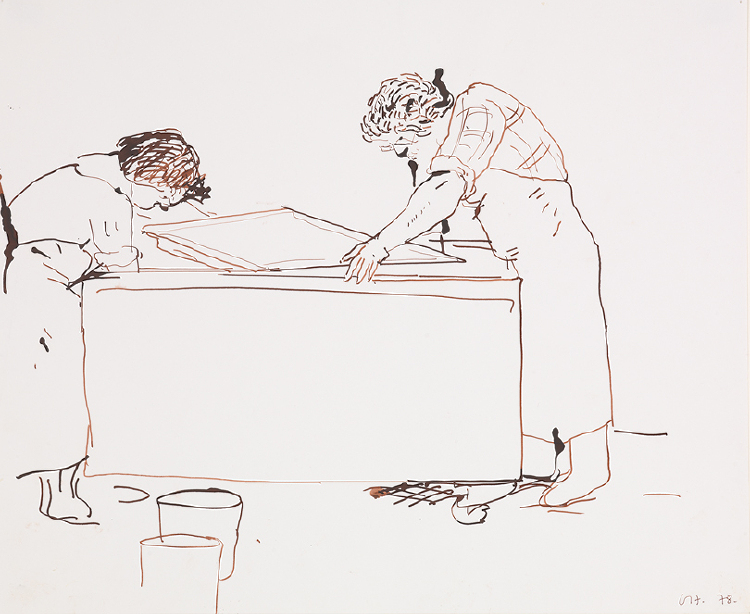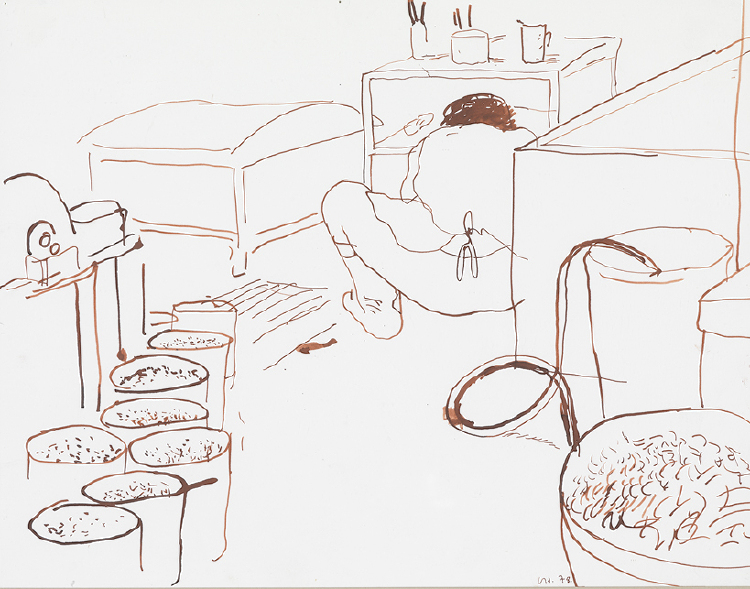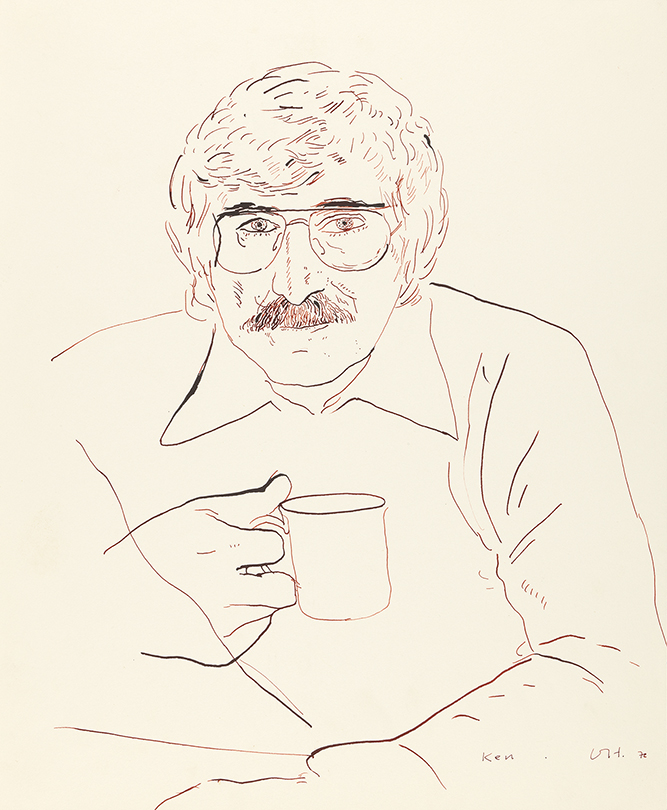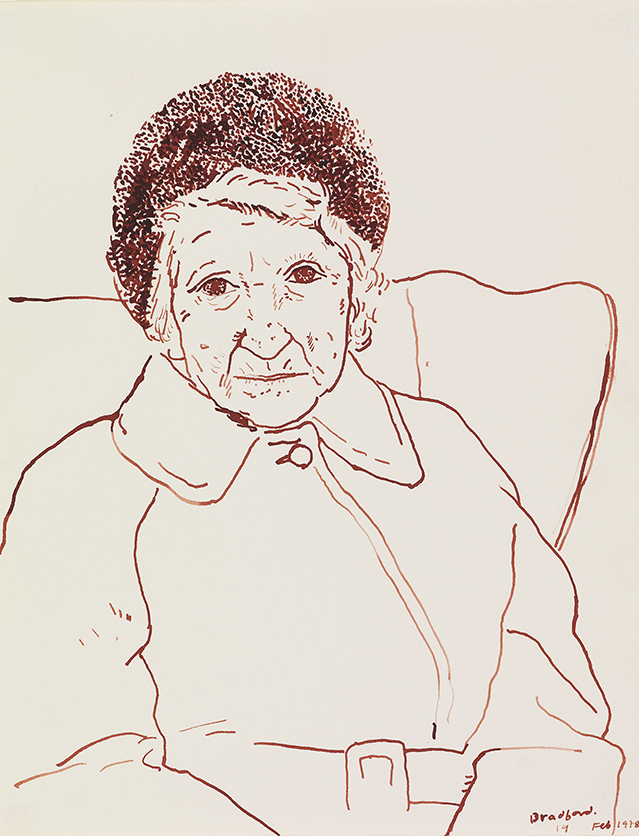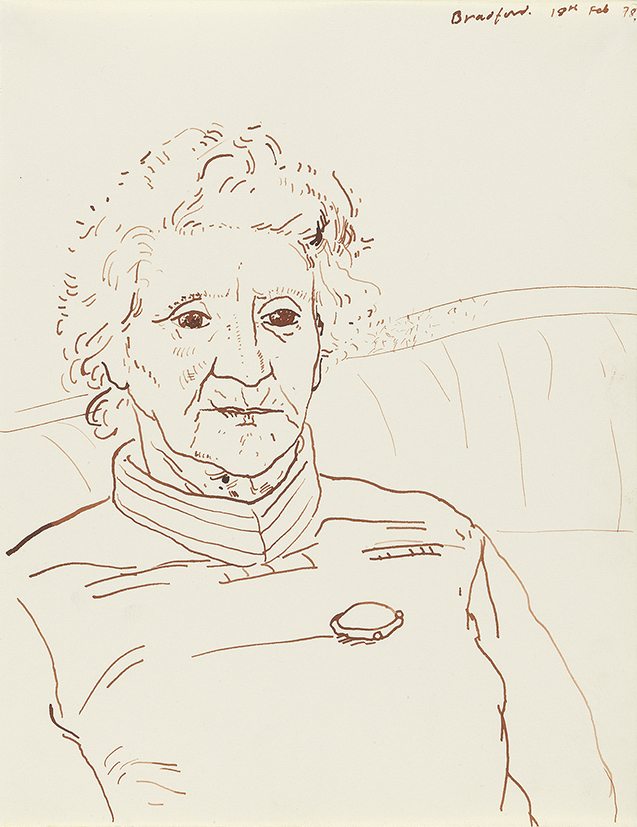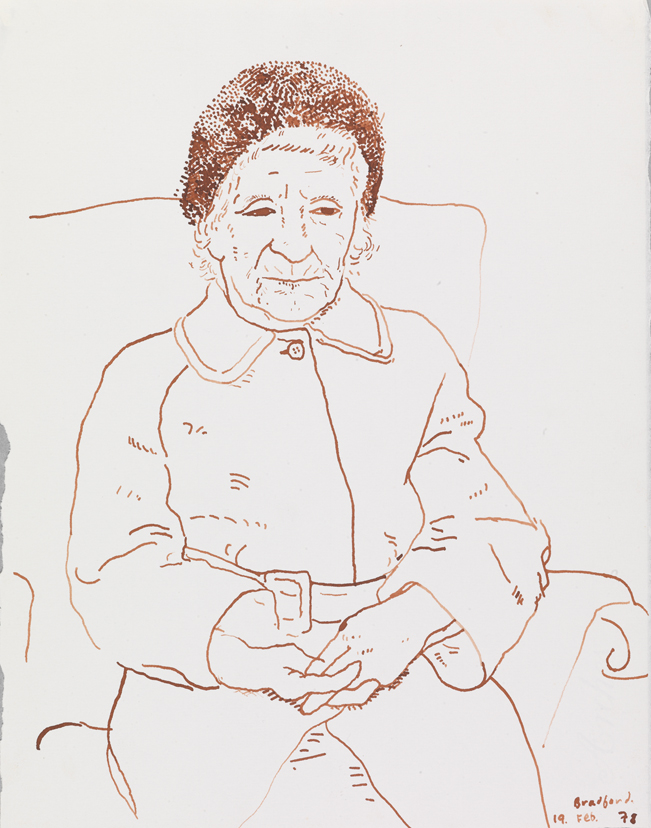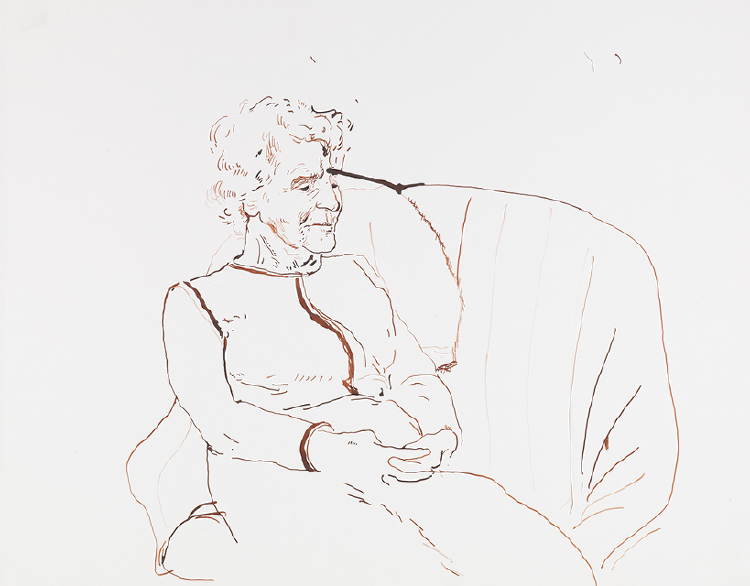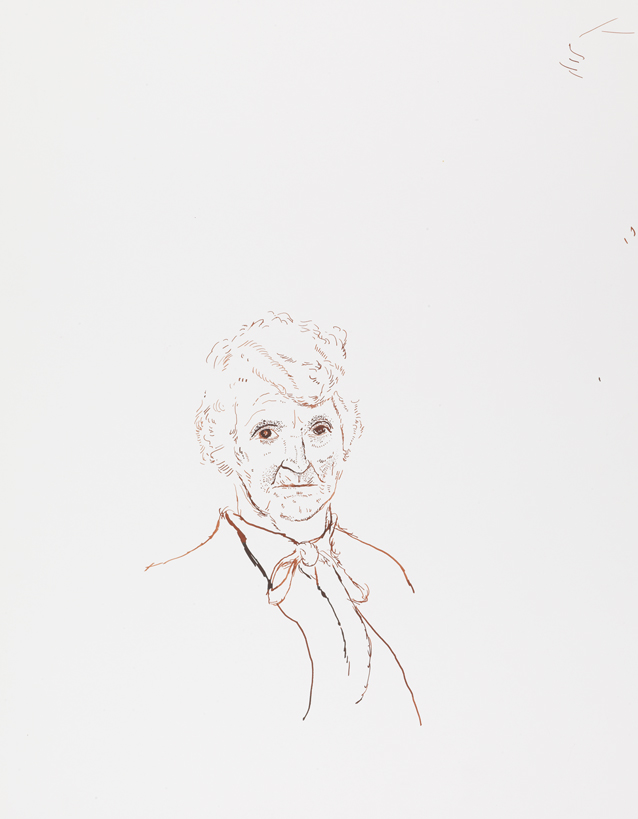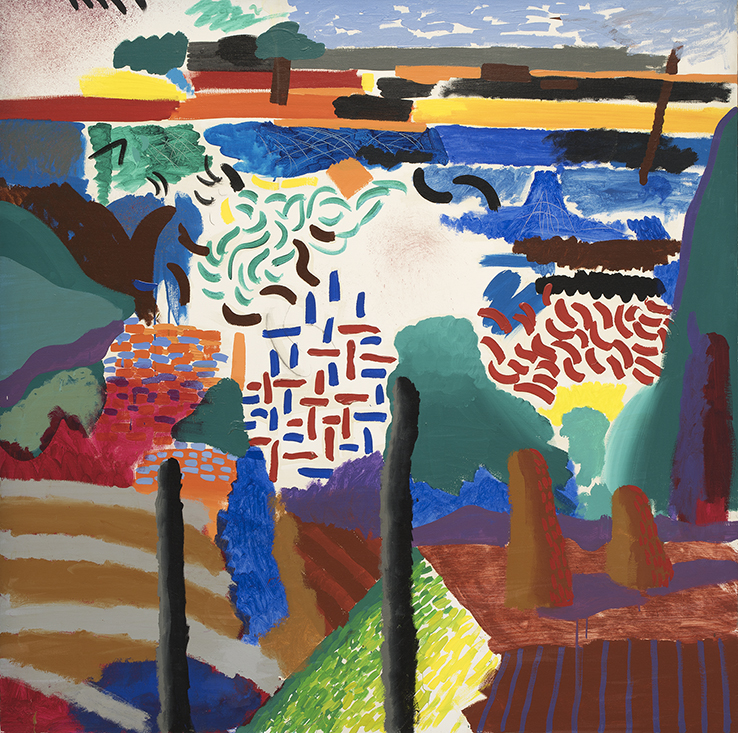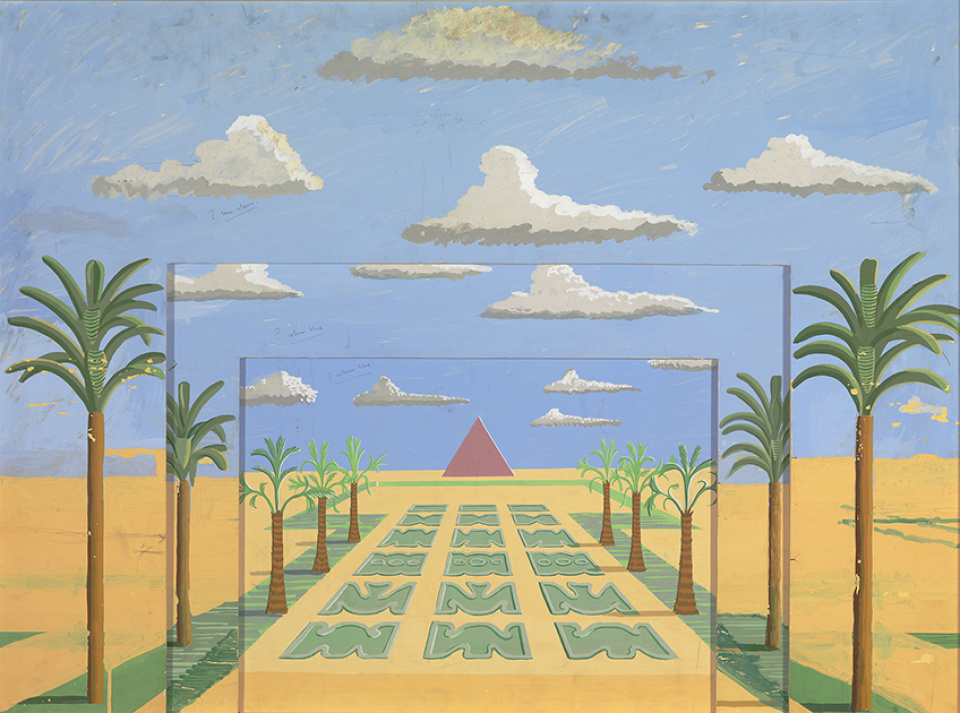
The Magic Flute
Hockney’s painting production grinds to a halt for nearly a year. Having begun in 1977, he works on a second commission for the Glyndebourne Festival Opera, again working with director [NESTED]John Cox, this time on a production of Wolfgang Amadeus Mozart’s The Magic Flute, which opens in May. Hockney produces a total of 35 backdrops for the opera, traveling to Egypt to see the very sites that inspired his design.
I wanted to do it plain, with flats moving in and out, as they did in Mozart’s time. I decided, specially in the first bit, that the music was crisp and clear, with a lot of color and fun. It was only in the nineteenth century that The Flute was thought to be so ponderous. I thought I’d begin like an Italian painting, with everything in focus. So I painted the rocky landscape for the opening scene without any tricks of perspective, and took the dragon from the Uccello in the National Gallery.
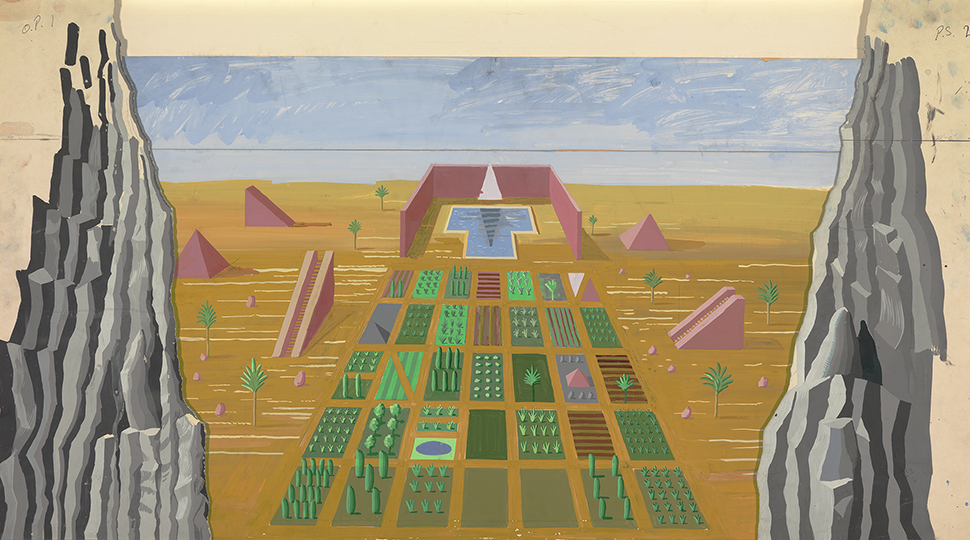
Paper Pools
In August, Hockney establishes Los Angeles as his permanent place of residence. That same month, he visits New Bedford, in upstate New York, to work with printer Ken Tyler on the series Paper Pools, made using an innovative process of moulding and pressing colored paper pulp according to the layouts of compositions of shimmering swimming pools. When they are shown in London the following year, William Feaver, writing in the Observer, praises the [NESTED]“scintillating watery effects: shoals of green commas, coalescing blues, ribboning shadows under the diving boards, a freestyle swimmer dissolved into pink underwater blobules.”
We were making unique objects, not prints, and it was thrilling work. We worked long hours, but we liked it. Ken is incredibly energetic and inventive. In using this paper pulp technique, you had to be bold. It is the exact opposite of an etching needle. An etching needle has a fine point, you put it on a lovely wax surface and you are drawing with a line. Here line meant nothing. It couldn’t be line; it had to be mass, it had to be color.
The reason I loved this work so much is that I believe it was the first time I felt I was using primary colors. Every time I leave England, I use clearer, brighter colors.
Looking at van Gogh
Hockney is spending time looking at Vincent van Gogh (Dutch, 1853-1890), and talks about the painting Café Terrace at Night (1888) in the [NESTED]BBC series One Hundred Great Paintings, directed by Peter Adam. Under the influence of the Dutch artist, he makes reed-pen drawings with a fast hand in sepia ink.
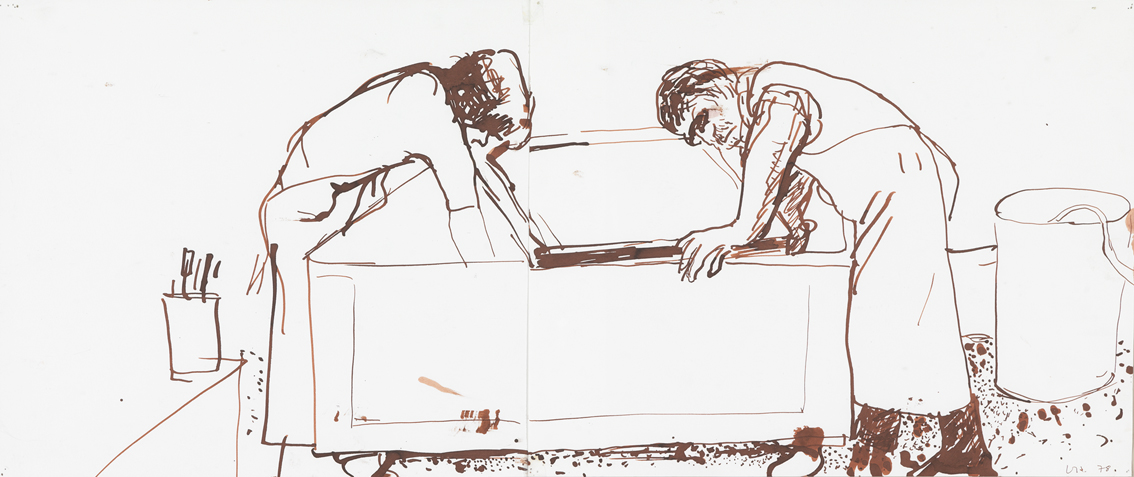
Prints and drawings at Yale
The survey of works on paper David Hockney: Prints and Drawings opens in New Haven at Yale Center for British Art before touring internationally for the next two years.
Painting L.A.
Settled in at his L.A. studio by late autumn, Hockney reinvests himself in painting, and in capturing with fidelity Southern California—its light, its wildness, its characters. He tests out a new kind of acrylic paint as he embarks on ambitiously scaled paintings, first Canyon Painting, and then the 20-foot-long Santa Monica Blvd. That long, lateral composition [NESTED]attempts to capture how Los Angelenos typically observe the street life of their city: looking out at it from a moving car. But Hockney never considers Santa Monica Blvd. satisfactory, eventually deciding that the problem is in relying on photographs over observational experience.
Hollywood Blvd. is better than ever. Rollerskaters everywhere gliding smoothly along smooth pavements … they have wonderful sexy outfits, pretty boys and girls …. I stood outside Musso and Franks the other Friday watching it all, and suddenly thought—if Breughel came to L.A.—this is what he’d paint. The young and lithe gliding past the regular little Hollywood couples window shopping on the street as though it’s Rodeo Drive.
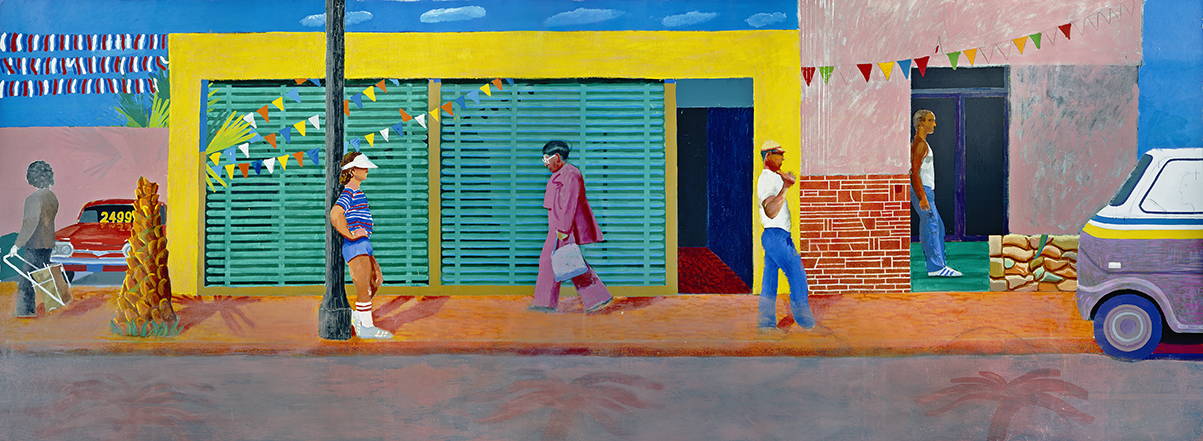
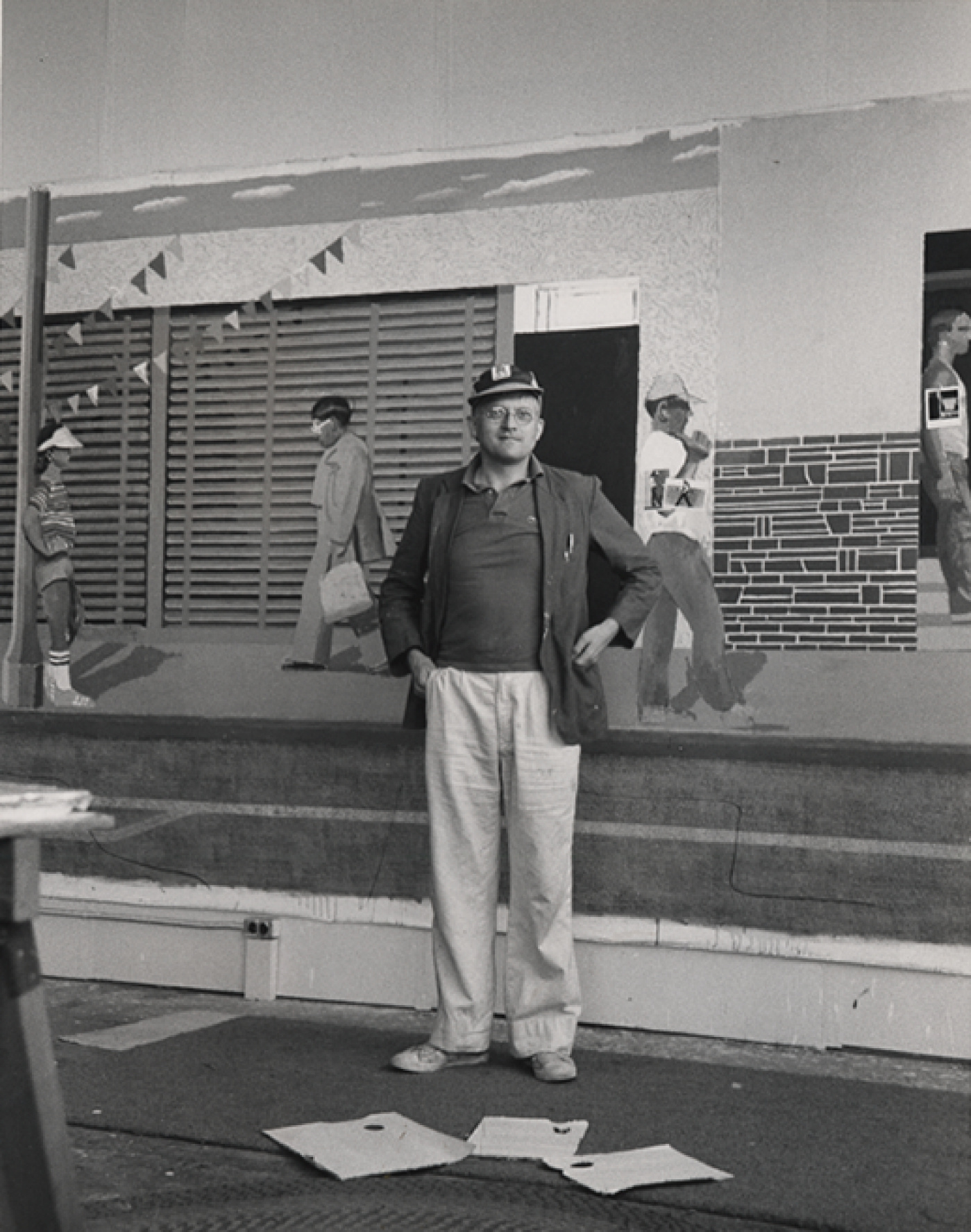
The Santa Monica Boulevard painting I had blocked in quite quickly, and then I kept struggling with it and altering it. I realized finally that I had probably painted about ten pictures on that canvas and I had kept taking them out. The picture had a horizontal format, but the eye didn’t move enough across it and the painting was too static. I wanted to get away from doing pictures in which the static element had become too dominant.
Of course, in L.A. the car plays a big part in your life. It’s how you move around, you’re forced to drive. If you walk along the boulevards it looks a bit blank, but if you drive you discover that a lot of the architecture and the signs are made to be looked at thirty miles an hour, whereas Rome, for instance, is made to be seen at two miles an hour. In Rome, you’re better off walking. But in L.A., if you’re looking for a shop, there will be a big sign above the little building so you can recognize it at speed. The architecture is meant to be seen when you’re moving fast.
Exhibitions
Solo
- Zeichnungen und Druckgraphik 1959–1977, Albertina, Vienna, Austria (Jan–Feb 1978), travels to Tiroler Landesmuseum, Ferdinandeum; Galerie Bloch, Innsbruck (Feb–Mar); Kulturhaus der Stadt, Graz (Mar–Apr); and Künstlerhaus Salzburg (Apr 19–May 7); catalogue.
- Drawings, Prints and Photographs, Nishimura Gallery, Tokyo, Japan (Sep 18–Oct 7).
- Drawings and Prints 1961–1977, L.A. Louver, Venice, CA, USA (Nov 28–Dec 31).
Group
- 20th Century Portraits, National Portrait Gallery, London, UK (Jun 9–Sep 17); catalogue.
Publications
Publications
- David Hockney, Zeichnungen und Druckgraphik 1959-1977, Albertina, Vienna.
- David Hockney, Prints and Drawings, by Gene Baro, Washington, D.C..
- Travels with Pen, Pencil and Ink—Selected Prints and Drawings, 1962–1977, by David Hockney, London: Petersburg Press.
Film
Film
One Hundred Great Paintings: Van Gogh–Café Terrace at Night, 10 min., BBC, directed by Peter Adam.
